PHOTOS: Outstanding Contemporary Croatian Architecture of the Year
February 10, 2021 – 10 of the most outstanding examples of contemporary Croatian architecture have been selected by the Association of Croatian Architects to compete in the extremely prestigious Mies van der Rohe Awards. Held only once every two years, they are the European equivalent of the Pritzker Prize for Architecture.
The Mies van der Rohe Awards are a really big deal. The greatest works of European architecture compete for recognition in the competition. The greatest success of Croatian architecture in the awards was attained by UP studios' Toma Plejić and Lea Pelivan, who received a special award for upcoming architects and had their high school in Koprivnica named the best building in that category in 2009. The success has had a considerable impact on their careers since.
Being held only once every two years, Croatian architecture projects completed since the closure of entries for the 2019 awards are eligible to be submitted. Here are the outstanding examples of contemporary Croatian architecture that will represent the country in 2022.
Cinema Urania Zagreb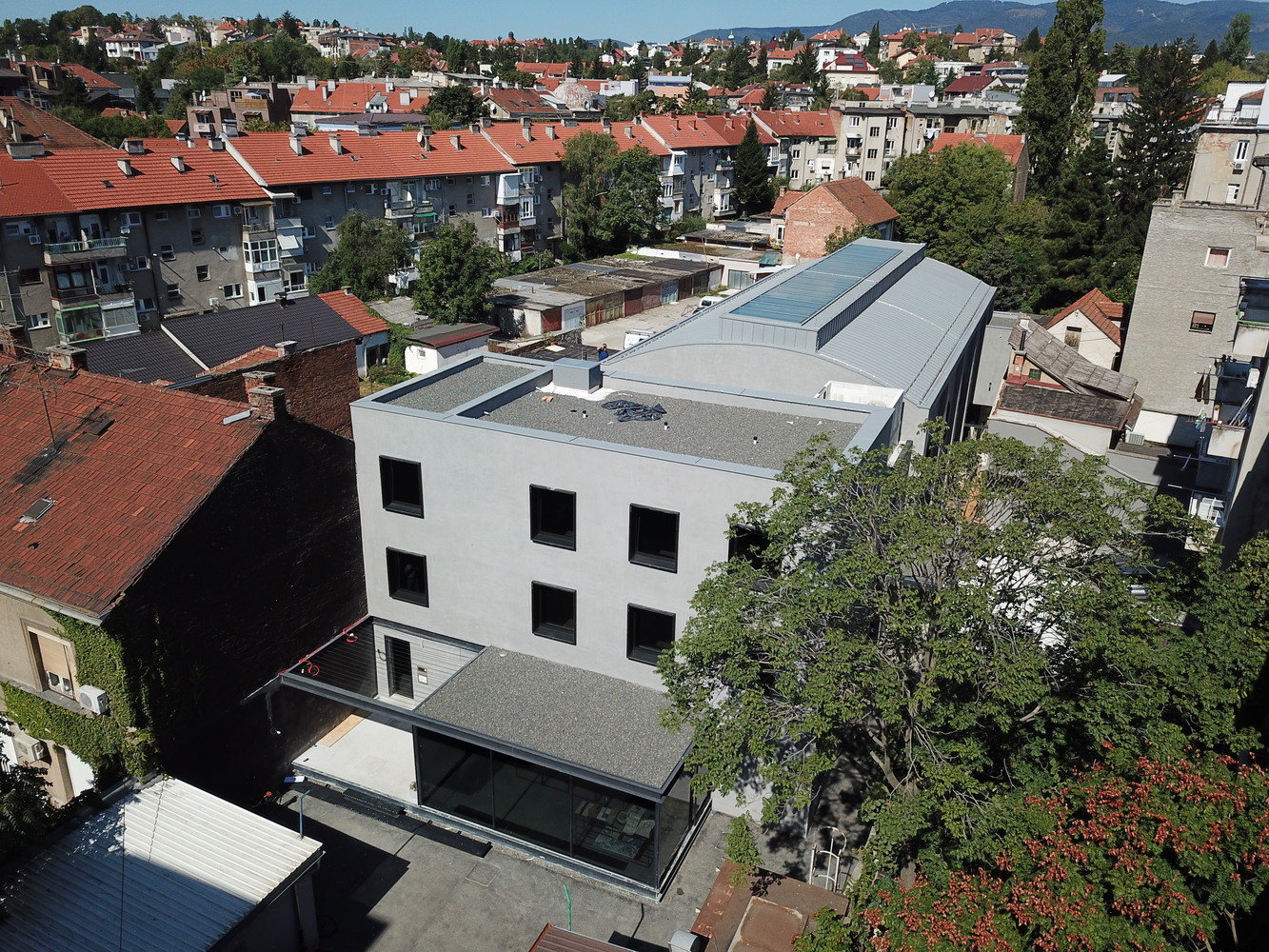
An old neighbourhood cinema built into the back streets near Kvatric. In their redesign, 3LHD preserved the best features from this early example of concrete engineering in Croatian architecture. They added a glass pavilion at the entrance, atriums and skylights, flooding the former darkness with the natural light needed for its new purpose as an event and work space.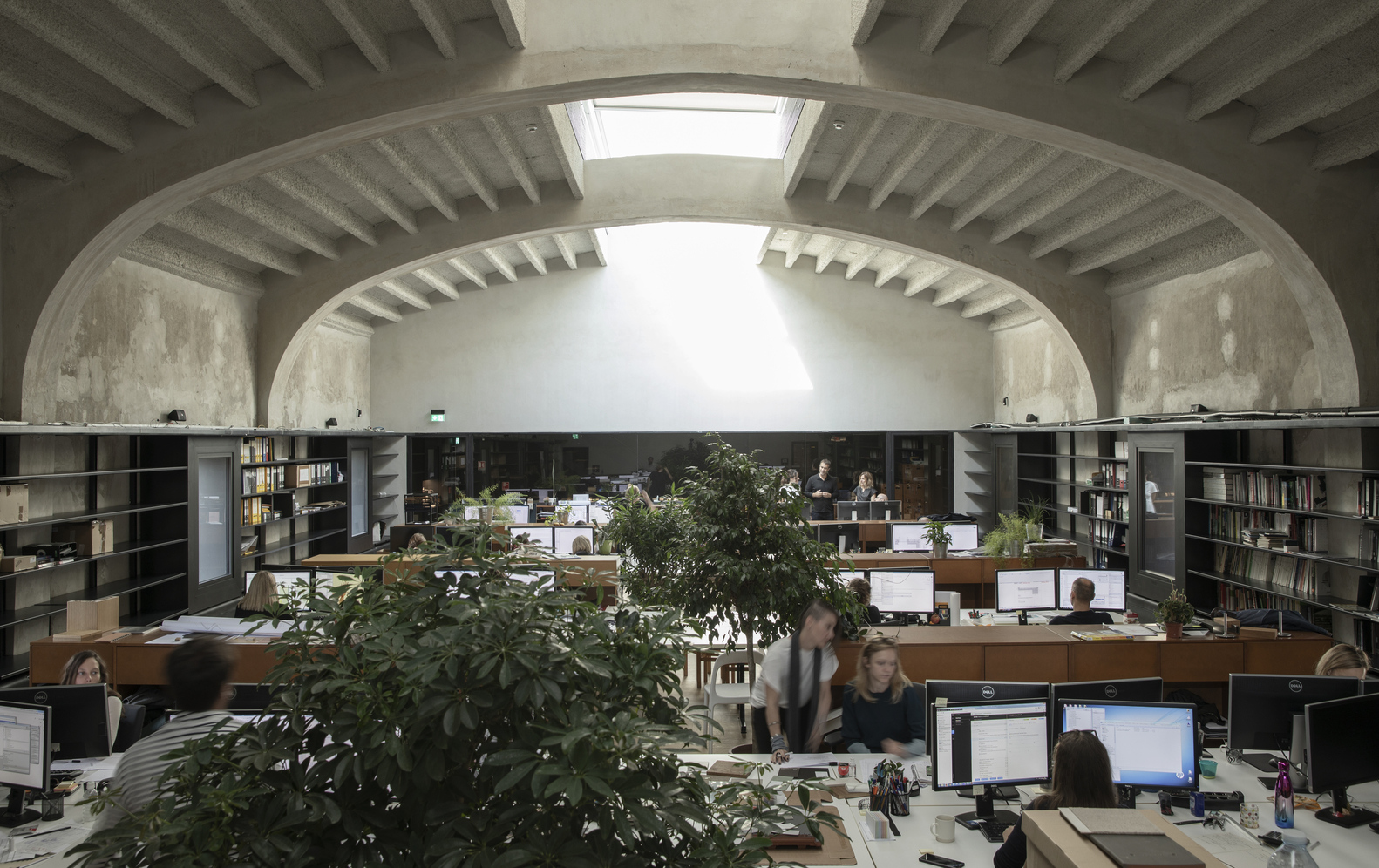 © Jure Živković
© Jure Živković
Grand Park Hotel, Rovinj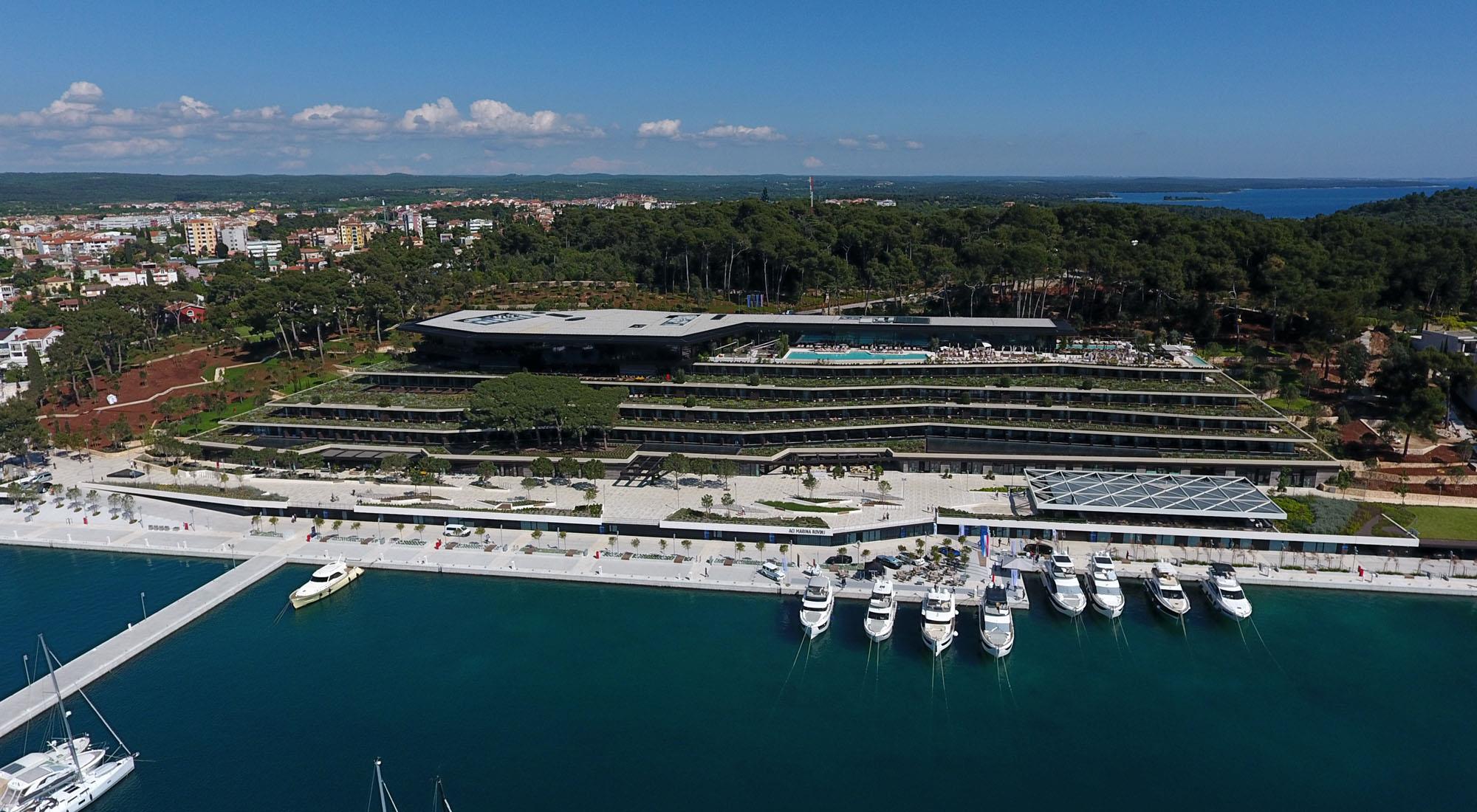
Sprawling widely across six stepped levels, the new luxury Grand Park Hotel and spa could easily have looked a long swipe of concrete. But, by places greenery on each of its staged roofs, architects 3LHD have ensured that no matter where you are in the 500-guest-capacity building, your view places you within a garden, looking out onto Rovinj Old Town and the expanse of the Adriatic. Croatian architecture at its most breathtaking.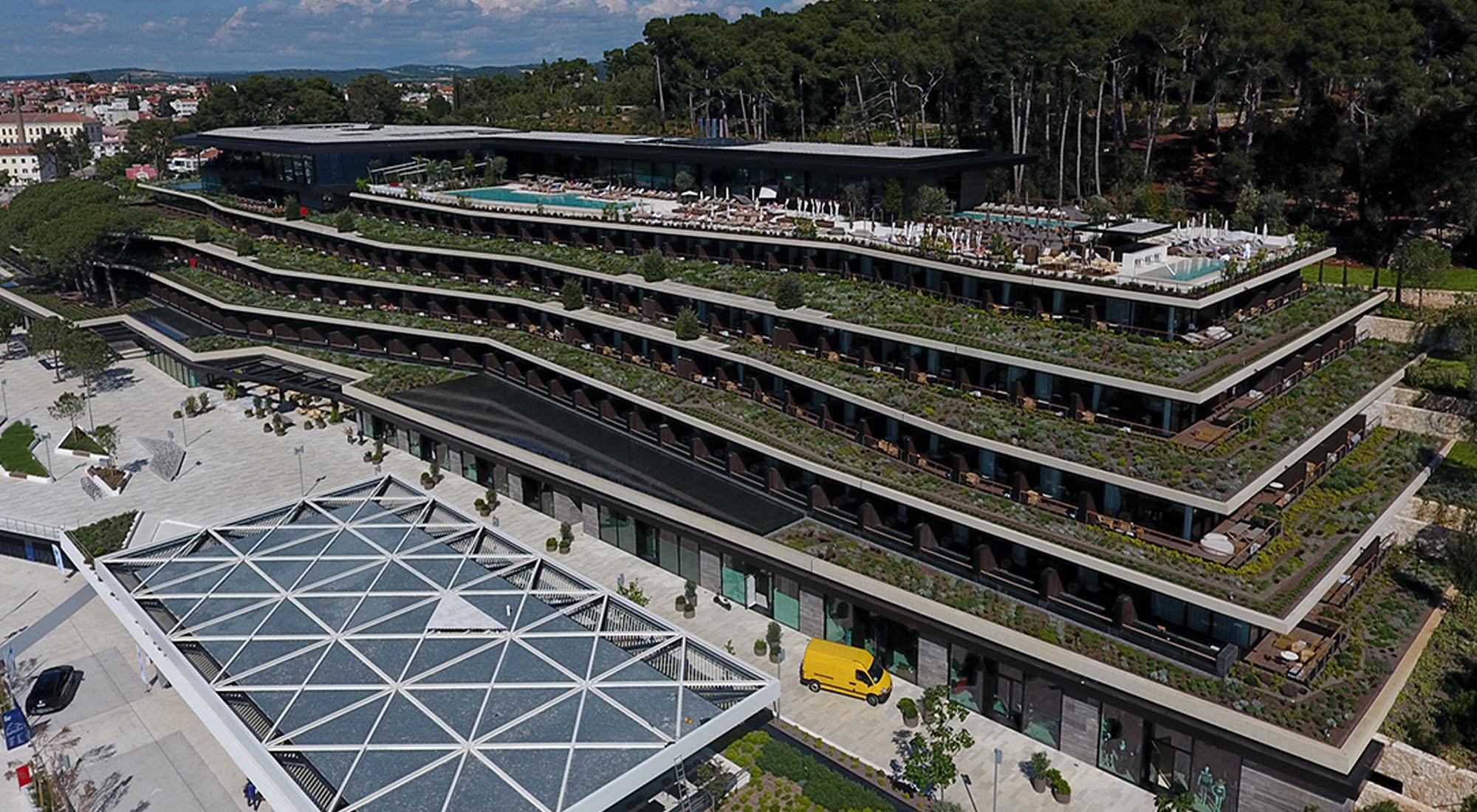 © Alukoenigstahl hr
© Alukoenigstahl hr
Ivanja Reka Elementary School, south Sesvete, east Zagreb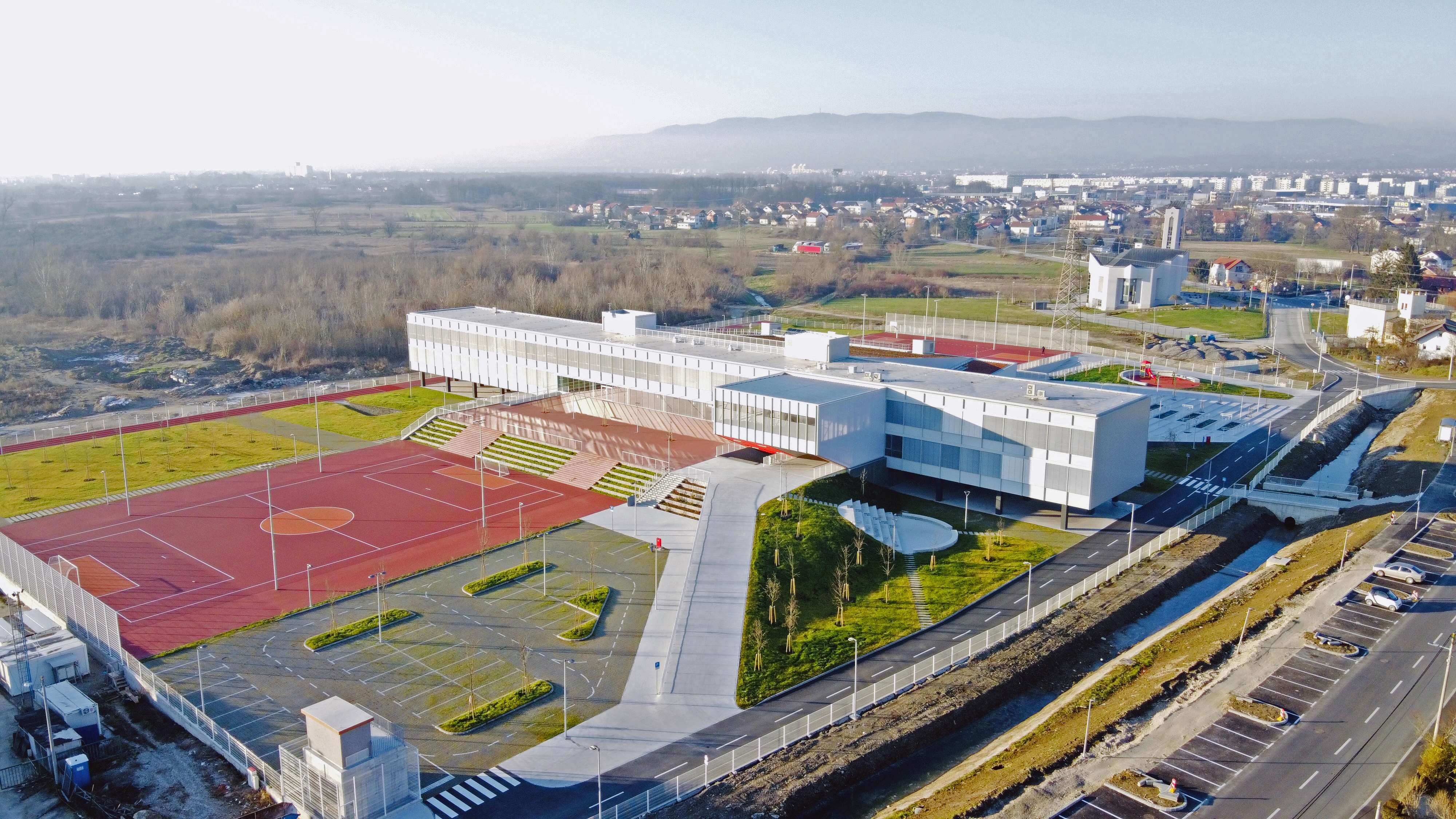
If every elementary school looked as pretty and was as well equipped as Ivanja Reka Elementary School in the south of Sesvete, eastern Zagreb, you could well believe daily attendance would never drop below 100%. Designed by a team of architectural authors (SUBMAP studios Marija Burmas and Ivo-Lola Petrić, and Jakša Kalajžić from JKA Arhitekti), the multi-level main building sits centrally, surrounded by sports, recreation and other facilities creating an impressive view for both those outside and within.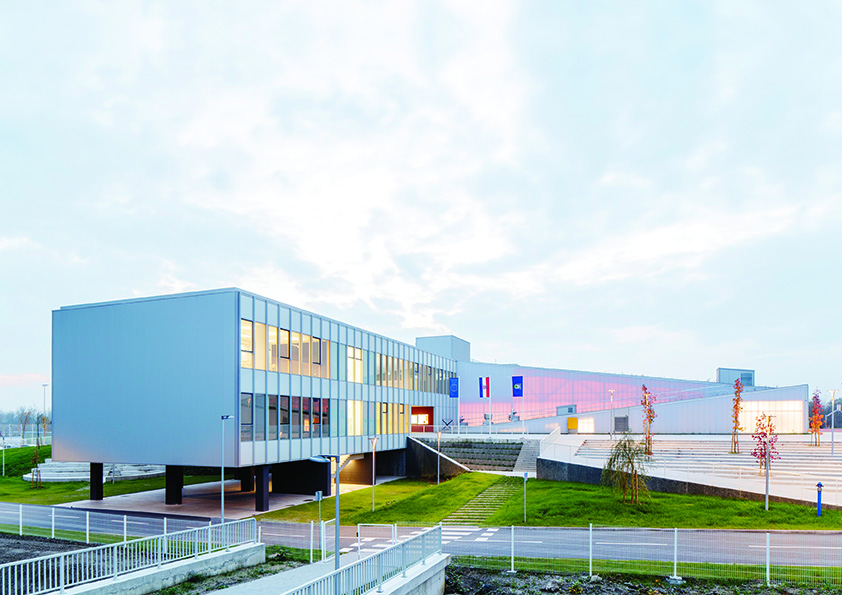 © Ivanja Reka Elementary School / Domagoj Blažević
© Ivanja Reka Elementary School / Domagoj Blažević
Roxanich Wine & Heritage Hotel, Motovun, Istria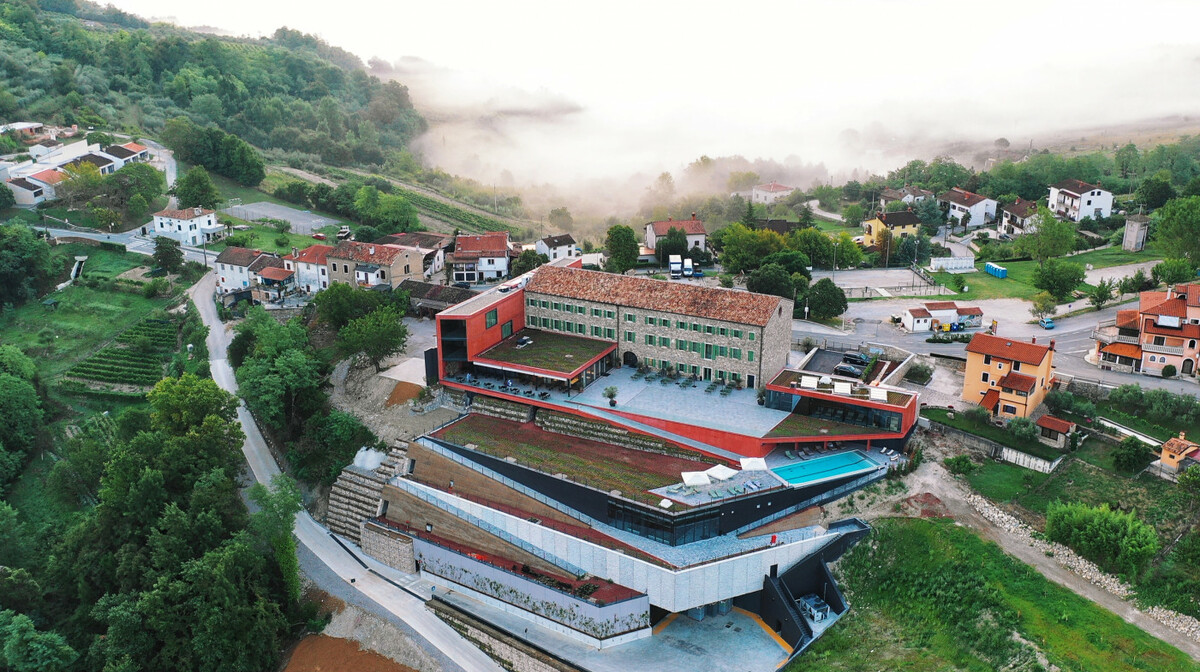
The view is unmistakably Istria. Vineyards carpet the land below and - rising above - the picturesque hilltop town of Motovun. Helmed architecturally by consistently bold Rijeka designer Idis Turato, this multi-level, multi-purpose redesign retains the traditional feel of its existing stone building and its purpose – there's a huge wine cellar beneath – but has opened up the space to give stunning views, not least over a sun deck that spectacularly reflects the sunrise and sunset. This is an active winery, with works and equipment all housed within its lower floors, not that you could tell from the 25 person capacity boutique hotel, restaurant and wine shop upstairs. © Roxanich.hr
© Roxanich.hr
Four Houses for Four Brothers, Diklo, Zadar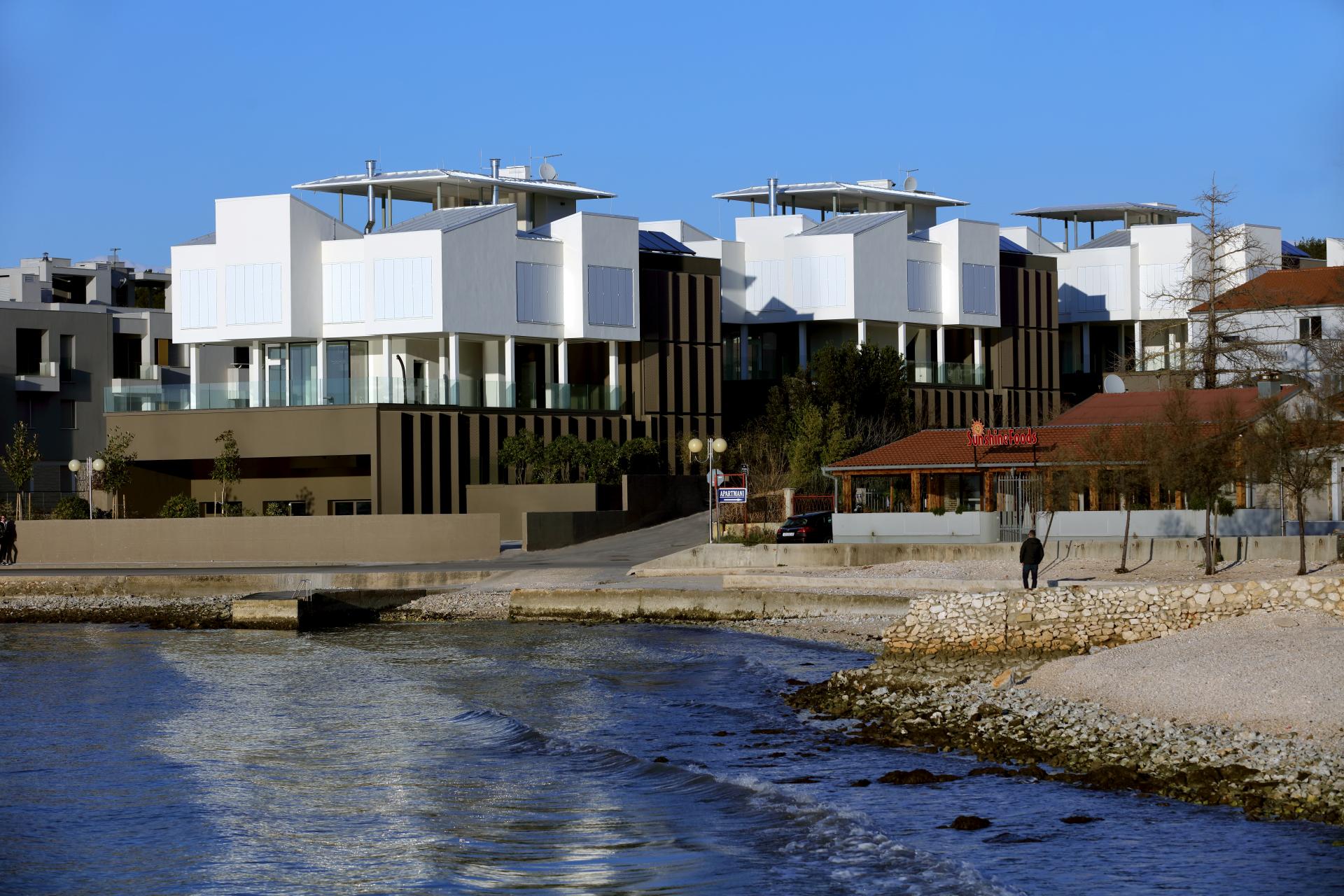
Judging from a theme of project titles used by architects Iva Letilović and Igor Pedišić, we're not sure that Four Houses for Four Brothers was actually commissioned by four brothers or that four live there. But, you could well believe they could. The ultra-modern set of independent houses, located next to a beautiful stretch of coast in a north Zadar neighbourhood, was specifically designed to address a distinctly Croatian reality – how to open up some of your dwelling to seasonal guests while you remain at home. The design separates the buildings clearly into separate quarters which allow privacy, comfort and minimal encroachment for both visitors and residents.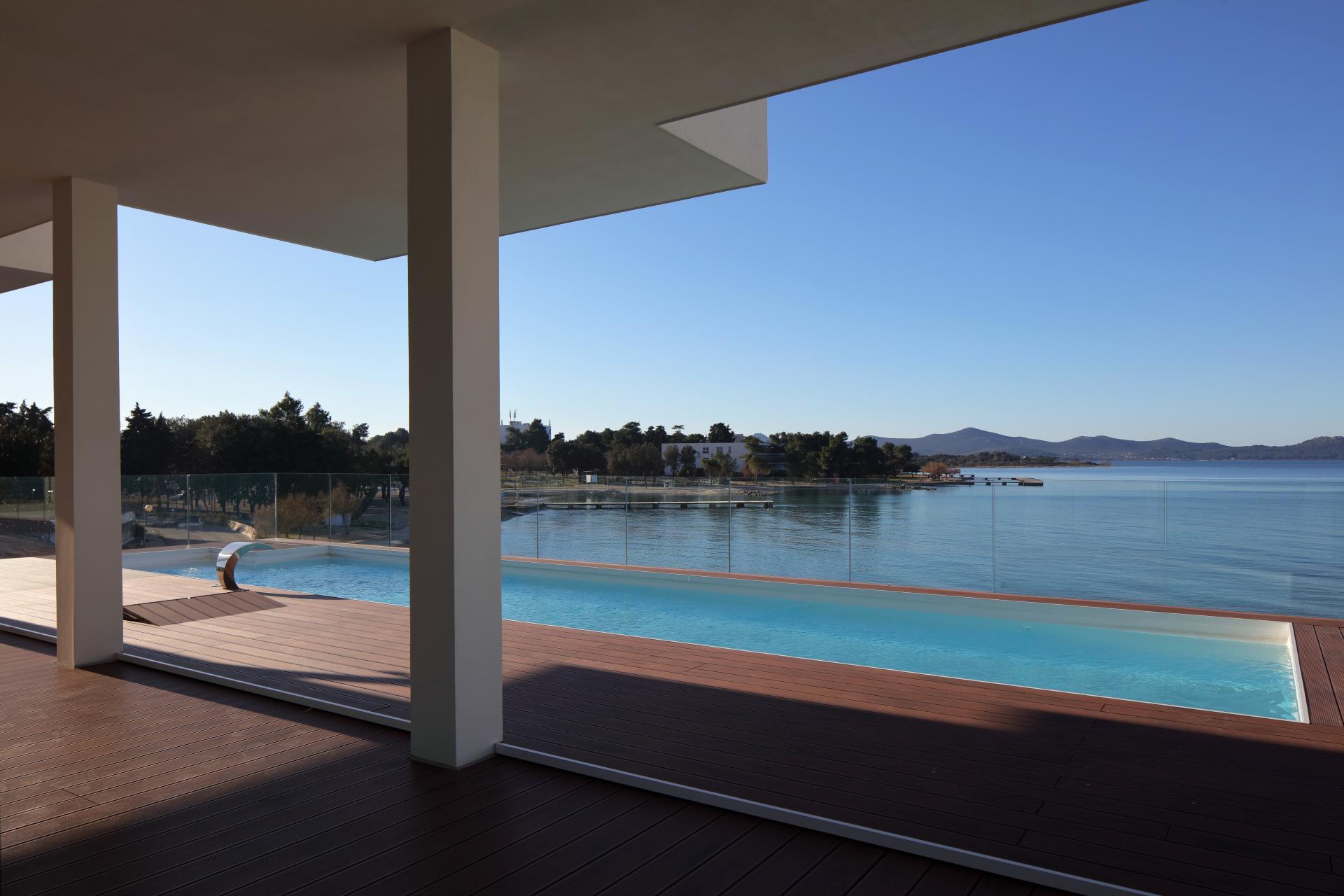 © Igor Pedišić
© Igor Pedišić
Galić Winery, Kutjevo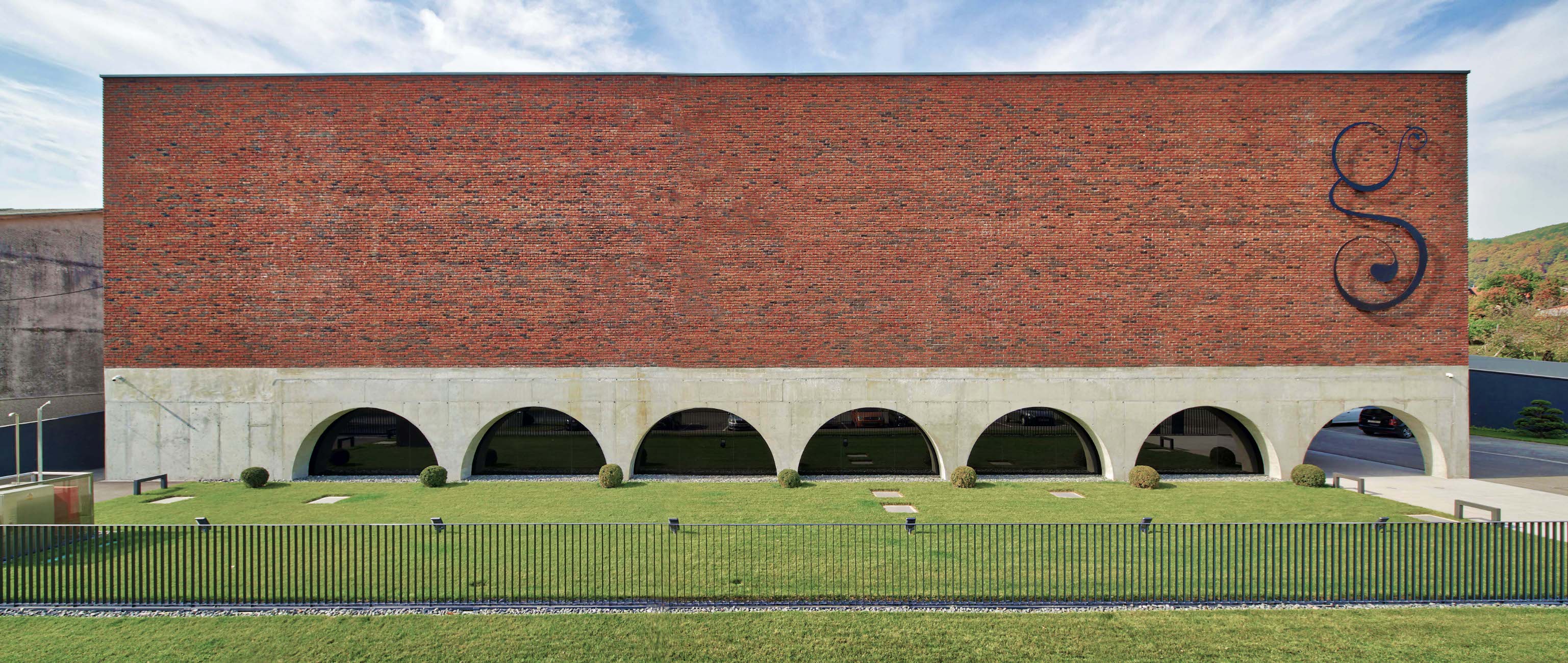
Award-winning outfit Zagreb-based studio Dva arhitekta have an existing, jaw-dropping design for a rural winery commissioned by famous makers Galic. However, that project, as yet, remains unrealised. But, their winery for Galic in the centre of Kutjevo town is complete. Melding the traditional and the contemporary, the upper section of the building is a bold and unblemished red brick, adorned with the winemaker's unmistakable logo. Beneath, concrete arches invite your eyes into the actual wine cellar – neat rows of barrels, protected behind glass walls that are set back from the facade. Brilliant!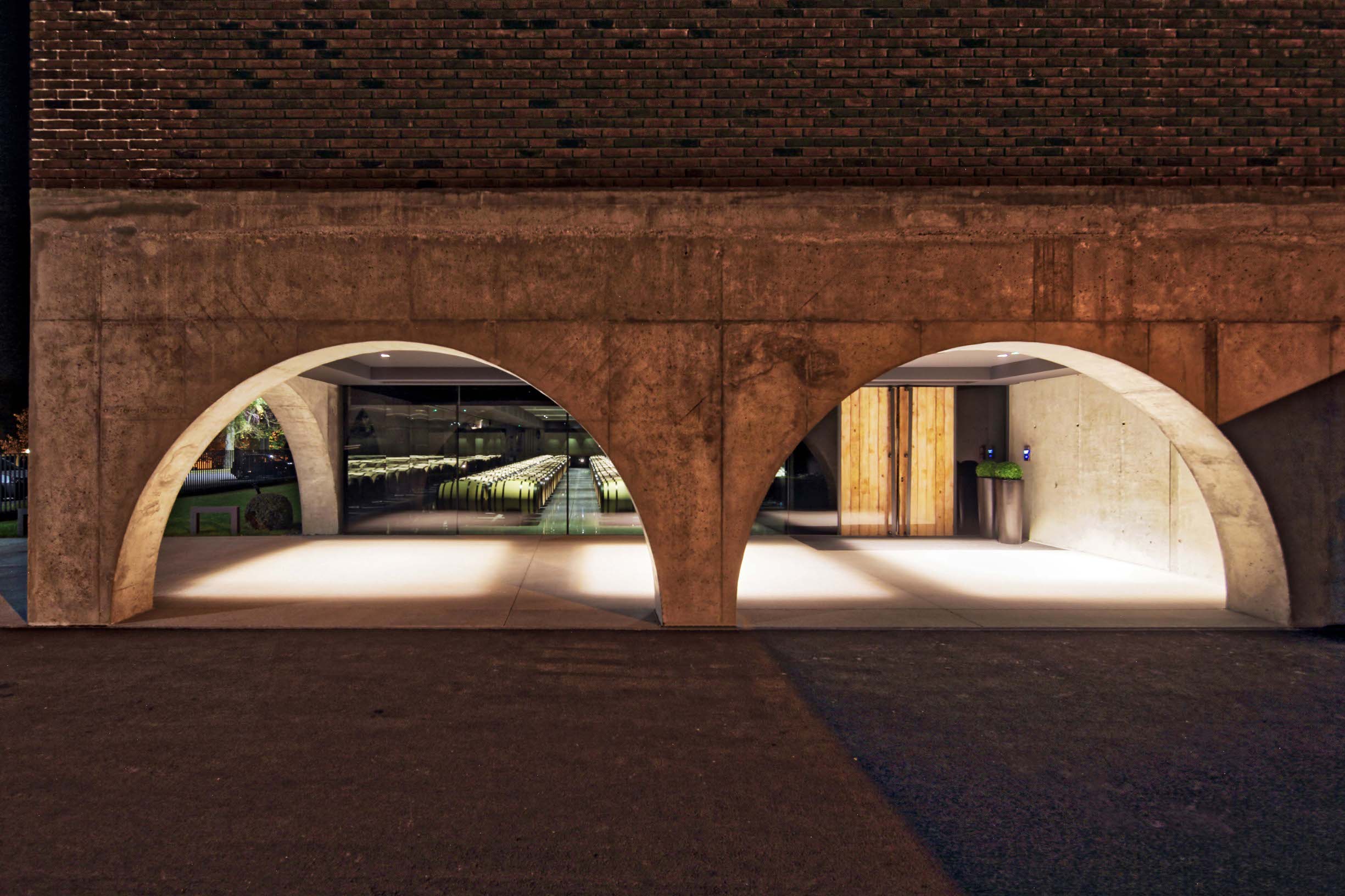 © Damir Fabijanić
© Damir Fabijanić
Seecel Centre, Zagreb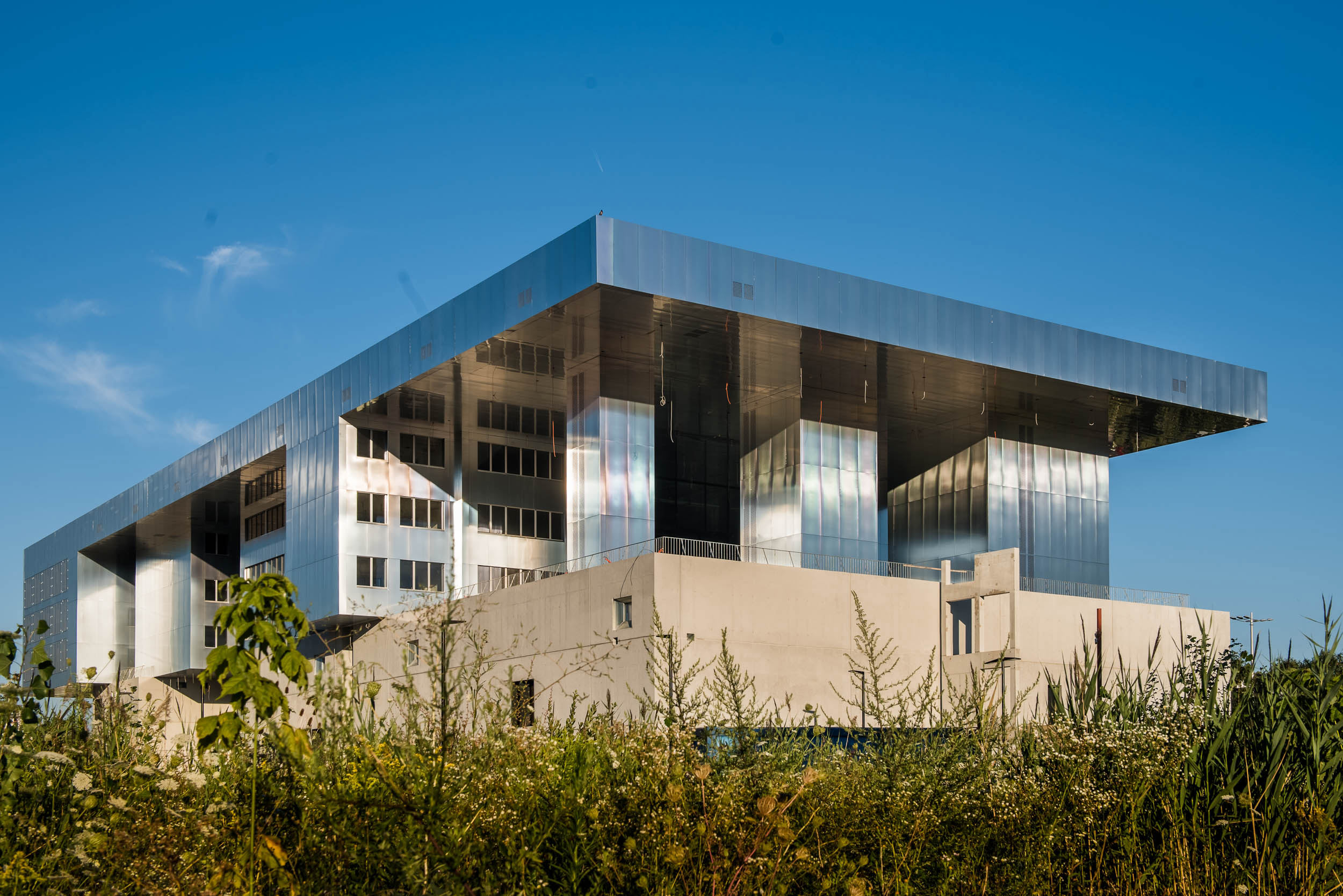
Designed as a regional centre for the development of entrepreneurs and its construction costs generously part-funded by European money, the Seecel Centre arrived long overdue and does not house its intended inhabitants. Such matters are best left for different articles as, here, we're concerned with the undeniable finery of this building's architecture and appearance. Holding space for accommodation, offices, communal collaboration, education and presentations, the five-floored building uses ultra-modern building materials and construction methods to make it low-energy, its great blocks of covered concrete, with glass windows set further back, echoing old fortifications. It was designed by Igor Franić who, in Croatia, is perhaps best known for the Museum of Contemporary Art in Zagreb and completed by him and his team at SZA / Studio za arhitekturu d.o.o.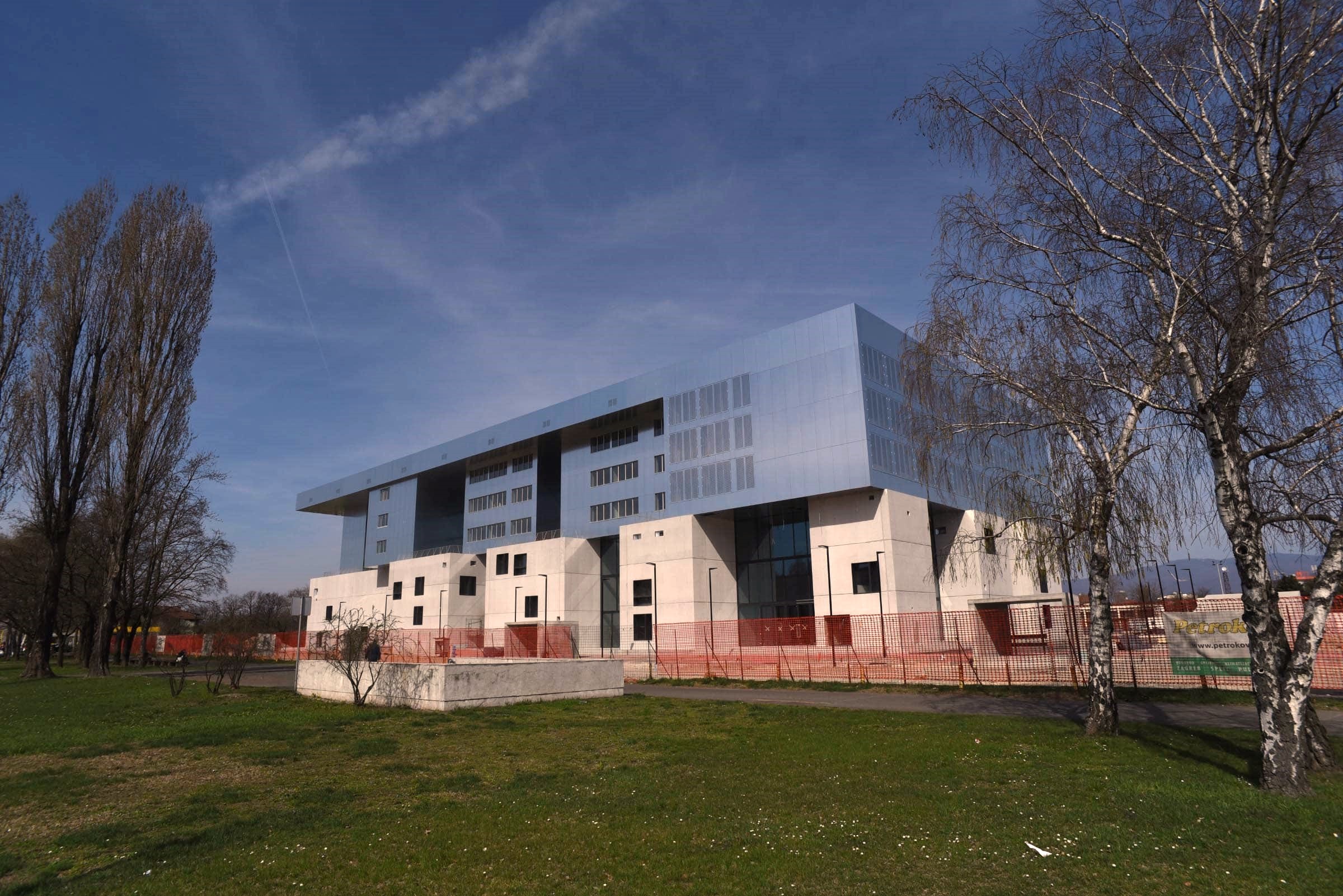 © Site Project d.o.o.
© Site Project d.o.o.
Trg Poljana, Šibenik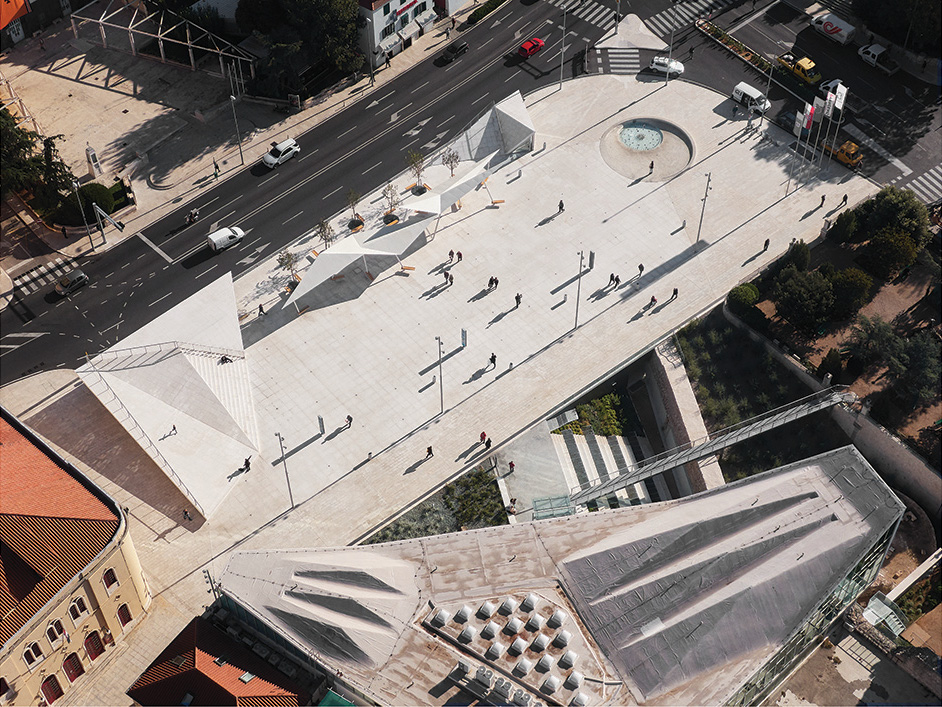
Not a small amount was asked of project architects Atelier Minerva from Dubrovnik in the task to create Trg Poljana in Šibenik. The site had long been earmarked for a much-needed, official town square – a place for events and public gatherings. But, the town was also woefully short on parking. By burying a multi-level car park beneath the open space, the architects successfully met both demands. Triangular shapes sit at an angle above shaded seating, echoing the inclines on the roof of the Juraj Šižgorić City Library opposite. Clever.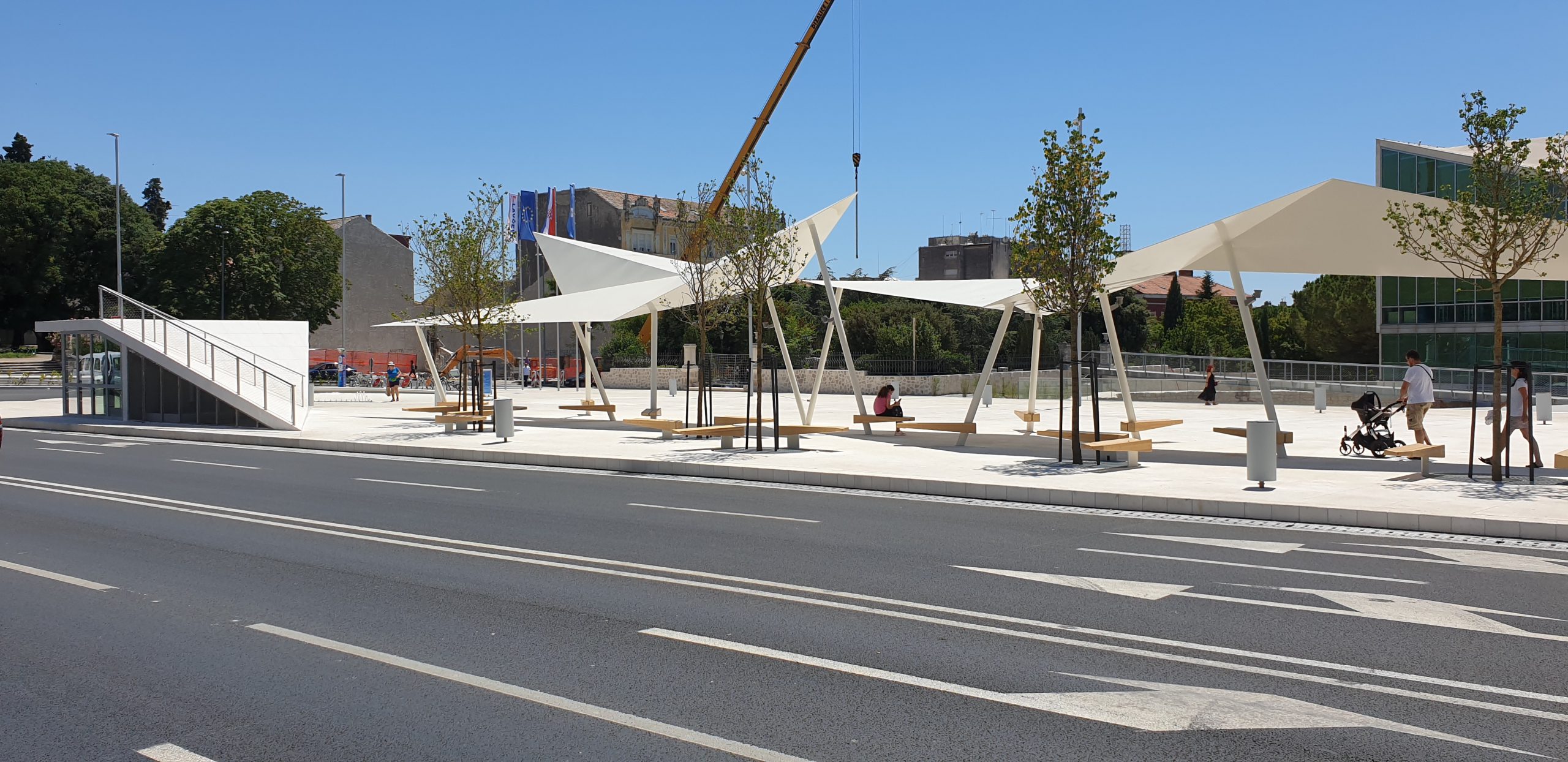 © Ervin Husedžinović / Eccos-inzenjering
© Ervin Husedžinović / Eccos-inzenjering
Homestead on Hartovski vrh, Žumberak, Zagreb County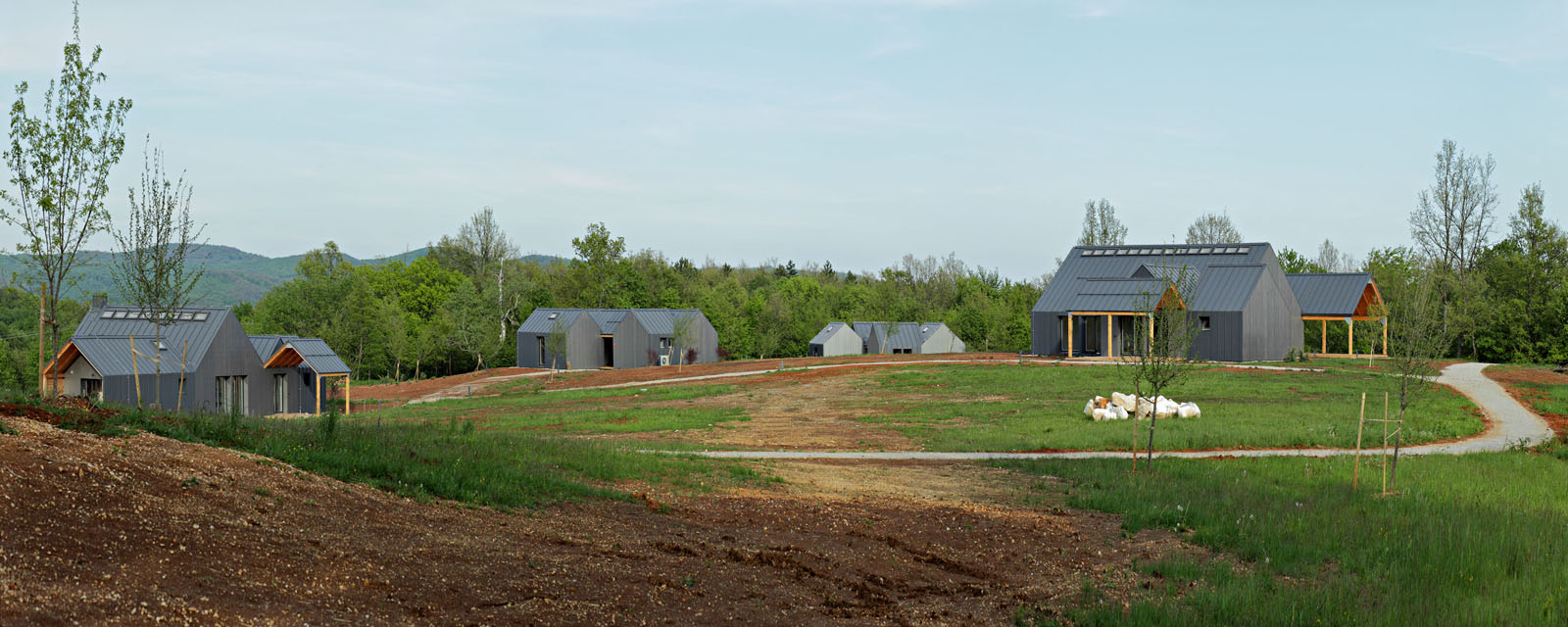
A collection of multi-purpose rural buildings, Homestead and Meditation Centre on Hartovski vrh was commissioned and designed for use by the Buddhist Center Zagreb. Their aim was to relocate activities such as chan, yoga, meditation, healthy living and teaching to a peaceful retreat outside of the city. Architects Branimir Rajčić and Mariela Žinić began the project in 2015, with the completed site arriving in 2019. Modern building materials are used, but not so the striking collection seems out of place within a partially agricultural setting. The set of buildings includes a residential dwelling and a larger hall for meetings and activities, both of which use large windows to allow the light and nature to flood in. © Robert Leš
© Robert Leš
Square of Traditional Crafts, Varaždin
A tricky task was given to architects Studio Konntra – how to enliven and modernise a traditional old square in the centre of one of Europe's best-preserved Baroque Old Towns. They did this by constructing transportable kiosks to house small outlets for local artists and craftsmen that cater to visiting tourists who come to the square. When occupied during the day, the plain wooden interiors allows the crafts to take centre stage. But, after closing time, the outsides of the wooden doors are brightly coloured and adorned with paintings, a welcoming environment for residents to use at night.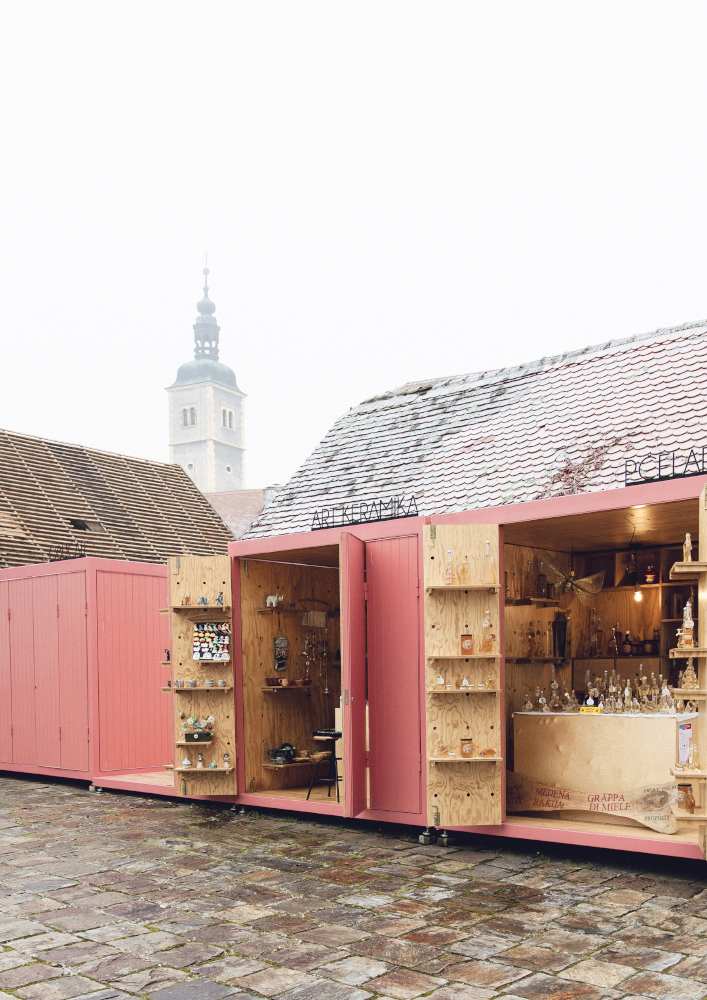 © Studio Konntra
© Studio Konntra
Medimurje Microlight Tragedy, Two Bodies Pulled From Lake
February 5, 2021 – A recreational flight in northern Croatia yesterday ended in tragedy when a Medimurje microlight crashed into a lake on the border between Varazdin County and Medimurje County
A recreational flight in the skies above northern Croatia yesterday ended with the tragic death of two people. A Medimurje microlight crashed into a lake near the border between Varazdin County and Medimurje County. Two persons were aboard the Medimurje microlight and both were sadly killed. Their bodies were retrieved from the lake by divers from the Čakovec Public Fire Brigade near the village of Novo Selo na Dravi.
The Medimurje microlight crashed into the accumulation lake of the Čakovec Hydroelectric Power Plant at around 3:22 p.m yesterday afternoon. Međimurje Police Department regrettably confirmed that the deceased were a 35-year-old and a 42-year-old. One was from Novo Selo na Dravi and the other from the Čakovec area.
Both the pilot and co-pilot of the Medimurje microlight were members of the Rode Kite Club from Prelog, which lies just a few kilometres to the east of where the Medimurje microlight crashed, on the other side of the Čakovec Hydroelectric Power Plant. Such is the popularity of the longstanding flight club, the tragic death of two of its members will have a significant impact on the large community that is welcomed at its facilities. Čakovec Hydroelectric Power Plant © HEP
Čakovec Hydroelectric Power Plant © HEP
Leon Krištović, Deputy Commander of the JVP Čakovec fireman's department, said that they received a report from the 112 emergency call centre and upon their arrival at the scene, were met by local fishermen who had witnessed the tragedy. The fishermen had recounted seeing the Medimurje microlight experiencing trouble before it crashed into the lake and were able to state they had seen two people on board. They directed the firemen to the position of the crash in the water, where the sad discovery of the deceased men was made. The Medimurje microlight was also retrieved from the water.
The accident was reported to the Air, Maritime and Railway Accident Investigation Agency (AIN) and the state attorney's office. An investigation will be conducted at the scene of the Medimurje microlight accident on the morning of Friday 5th February 2021 in order to determine the circumstances of this event.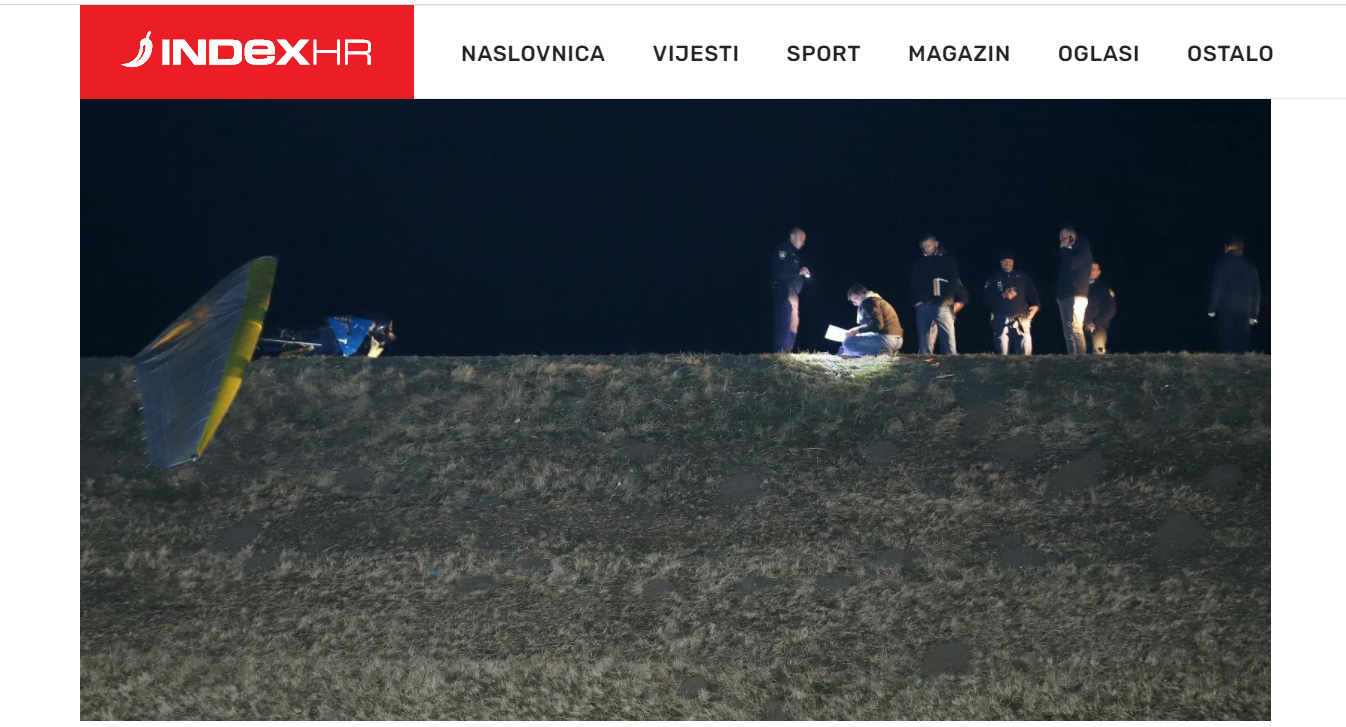 Photo © Vjeran Zganec Rogulja / Index screenshot
Photo © Vjeran Zganec Rogulja / Index screenshot
All emergency services attended the crash site in order to join the initial response. From pictures of the search operation's aftermath, published in Index, the Medimurje microlight which crashed looks to have been an ultralight trike. It is a type of powered hang glider that has a fabric flex-wing, powered by a propeller at the rear (behind its occupants) and controlled directionally by weight-shift, as with traditional non-motorised hang gliders. Popular since the 1980s, these microlights have a very good reputation for allowing safe, accessible and inexpensive flying.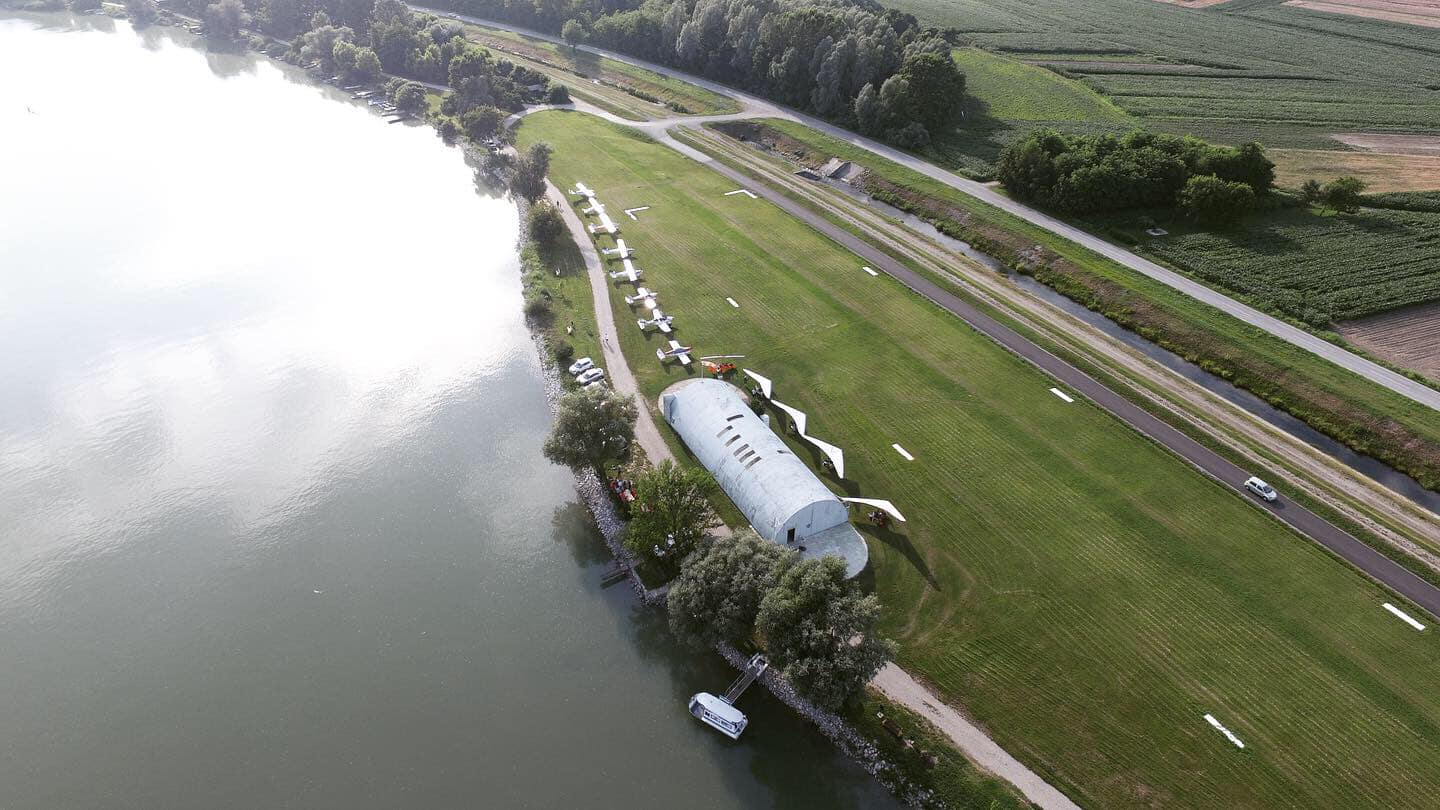 The airfield and facilities of Rode Kite Club, Prelog © Jakov Balent / Zmajarski klub Rode
The airfield and facilities of Rode Kite Club, Prelog © Jakov Balent / Zmajarski klub Rode
The Rode Kite Club (Zmajarski klub Rode) from Prelog has a similarly well-established record for safety. They have their own airfield, which is pristinely maintained, and which welcomes a broad section of Cakovec County and Varazdin County community members to its activities and events, including many families and young people. As well as motorised hang gliding and microlights, over recent years the club has accommodated drone enthusiasts and hosted some light aircraft. It also welcomes enthusiasts of motorised model cars, planes and boats. It sits next to the waters that form a natural barrier between Cakovec County and Varazdin County.
Ludbreg Winemakers' Wines Thrive Due to God-Given Microclimate
January 23, 2021 – The feast of St Vincent's Day, Vincekovo, could not be celebrated this year due to the epidemiological situation, but Ludbreg winemakers continue to focus on their wine production. Thanks to the very favorable climate, the Ludbreg area is suitable for planting vineyards, and local winemakers hope to soon get their well-deserved place on the Croatia's wine list.
Vincekovo, which was celebrated yesterday, January 22, in the Ludbreg area, used to be celebrated in Globočec when the plantations were blessed. The main event was a traditional and unique exhibition of young wines from the Ludbreg and surrounding vineyards, which was canceled this year due to strict epidemiological measures and a challenging situation.
It is an additional blow for all caterers who suffered the most in the corona crisis and wine producers. Local winemakers and winegrowers will wait for some better times to meet and rejoice with friends.
Sanja and Tomislav Stručić, top winemakers from Ludbreg, who met with TCN in Ludbreg last year, told their business story for the Epodravina.hr portal.
Family vineyard three kilometers from the center of the world
"We were pleased by the announcement that we could reopen our doors in February, but if we won't open until Easter, as announced, the season is questionable. We are very affected," says winemaker Sanja Stručić.
However, despite the pandemic, wine lovers are not resting. Caring for the vineyards is a year-round work, essential for producing good wine. The season begins now when the first pruning is done and lasts until the harvest.
"Last year, we estimated that, given the situation with the coronavirus, we would have stocks of wine. Therefore, we reduced the grape yield during pruning in the spring. We left grapes for sparkling wine and wines to age. We want to produce quality, not quantity, that is, high-quality wines," says the Stručić family.
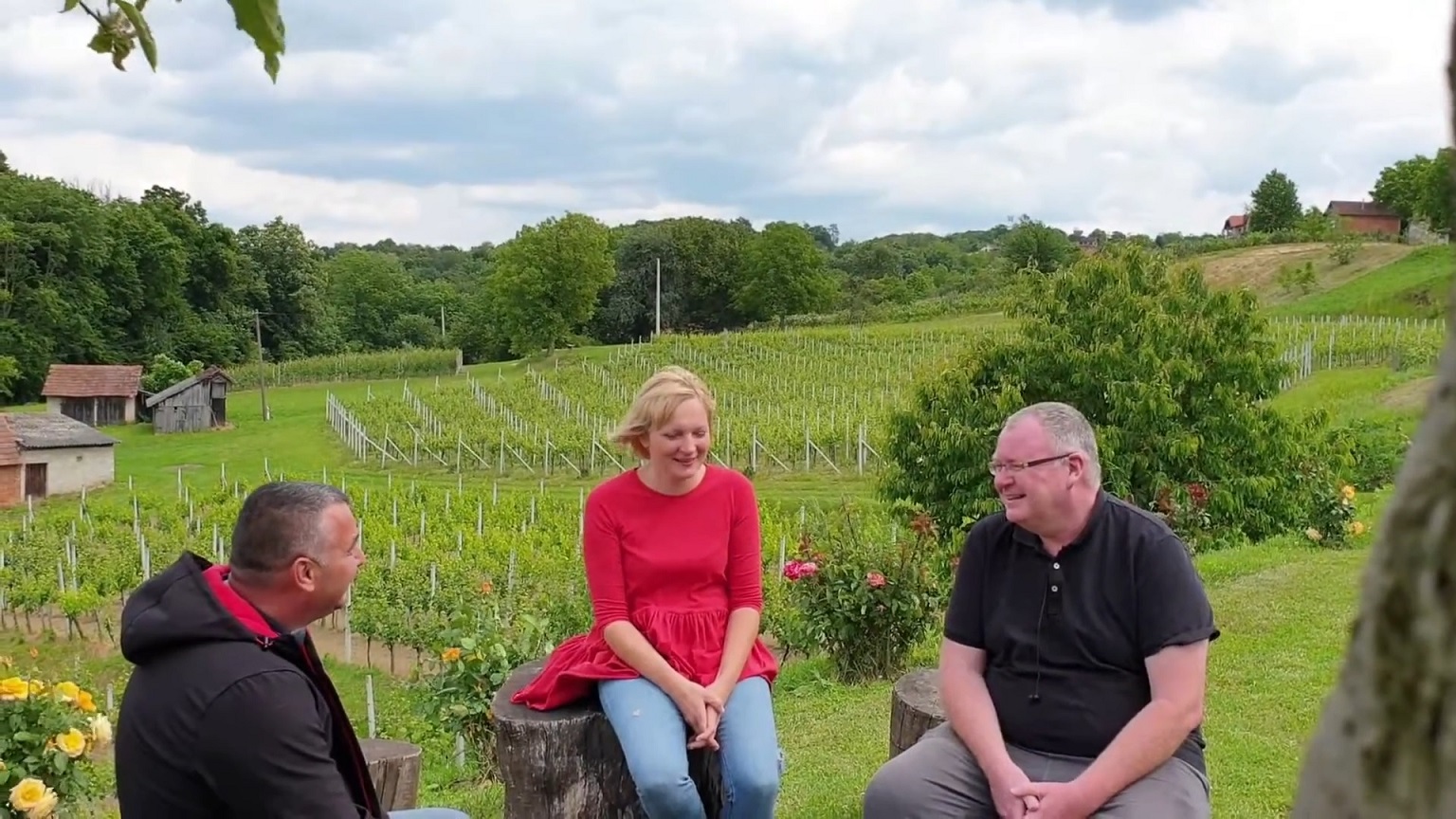
Sanja and Tomislav Stručić with Paul Bradbury in 2020, Total Croatia News
Their beautiful wine-growing hills, clean air, excellent wine, and hospitality evoke the love of land and viticulture that began in 1984 with a family vineyard just three kilometers from the center of the world. Sanja's father, Dragutin Crnković, once planted the first vineyard there, passed on his love of viticulture to his daughter, and introduced her to the wine business.
Emphasis is on the premium line of nature wines
Sanja's husband, Tomislav, also fell in love with winemaking and viticulture. In 2000 they founded the Winery, and in 2017 they produced the first sparkling wine in the region. They are the new wine style leaders in Varaždin County, and today they create top and quality wines.
Stručić Winery has become one of the most famous and successful and began more severe production in 2002. The emphasis is on the premium line of wines represented by nature wines. The premium line consists of carefully selected bunches hand-picked from selected vines. Sanja showed her love, passion, and care for each of these grapes before they become wine.
"Only ripe grapes are picked from the petiole by hand, clean and healthy. Fermentation on own yeasts and grapes, without the addition of selected yeasts, produces natural wines. This top line comes in different bottles and has different labels. We have been making it in small batches, approximately 750 bottles, for four years now, every year with a new vintage," says Sanja.
Back in 2016, Stručić family even produced a special edition of Sara Kolak Chardonnay to celebrate the local Olympic javelin gold-medal winner.
Journalists who encourage stories about gastronomy, tourism, and hedonism are also responsible for the turn in wine production. The Stručić family decided to take advantage of the microclimate and their plantations' position, which enable them to produce excellent raw materials for the production of different wine styles.
"We researched and realized that our region is a microclimatic God-given. While visiting various wine fairs and festivals, we realized we want to make different wines. The exhibitions were an incentive for us to expand our knowledge to be as good as possible. We also visited wineries in Italy to get a better insight into their viticulture and winemaking that is at a high level, and to apply experiences and some wine secrets in our vineyard and cellar," says Sanja on how they started producing sparkling wine and natural wine.
Produced the first sparkling wine in the region
The family vineyard initially had 3,500 vines and was later expanded with new plantations. Today, they cultivate three and a half hectares of land with 14,000 vines. It consists of plots named after the youngest members: Lucija, Luka, and Petra, and the newest plantation was named after their niece Katarina. The plots are registered by varieties and years of planting. The rulers of their vineyard are Graševina, Chardonnay, Rhine Riesling, Sauvignon, Portuguese and Yellow Muscat.
"We produce Graševina, Chardonnay, Sauvignon, Rhine Riesling, and mixed wines. Poštenjak is a blend – a mixture of Graševina, Chardonnay, and Pinot Gris. We make fruit wines and liqueurs, and sparkling wine. We produce about 25,000 bottles a year," says Tomislav.
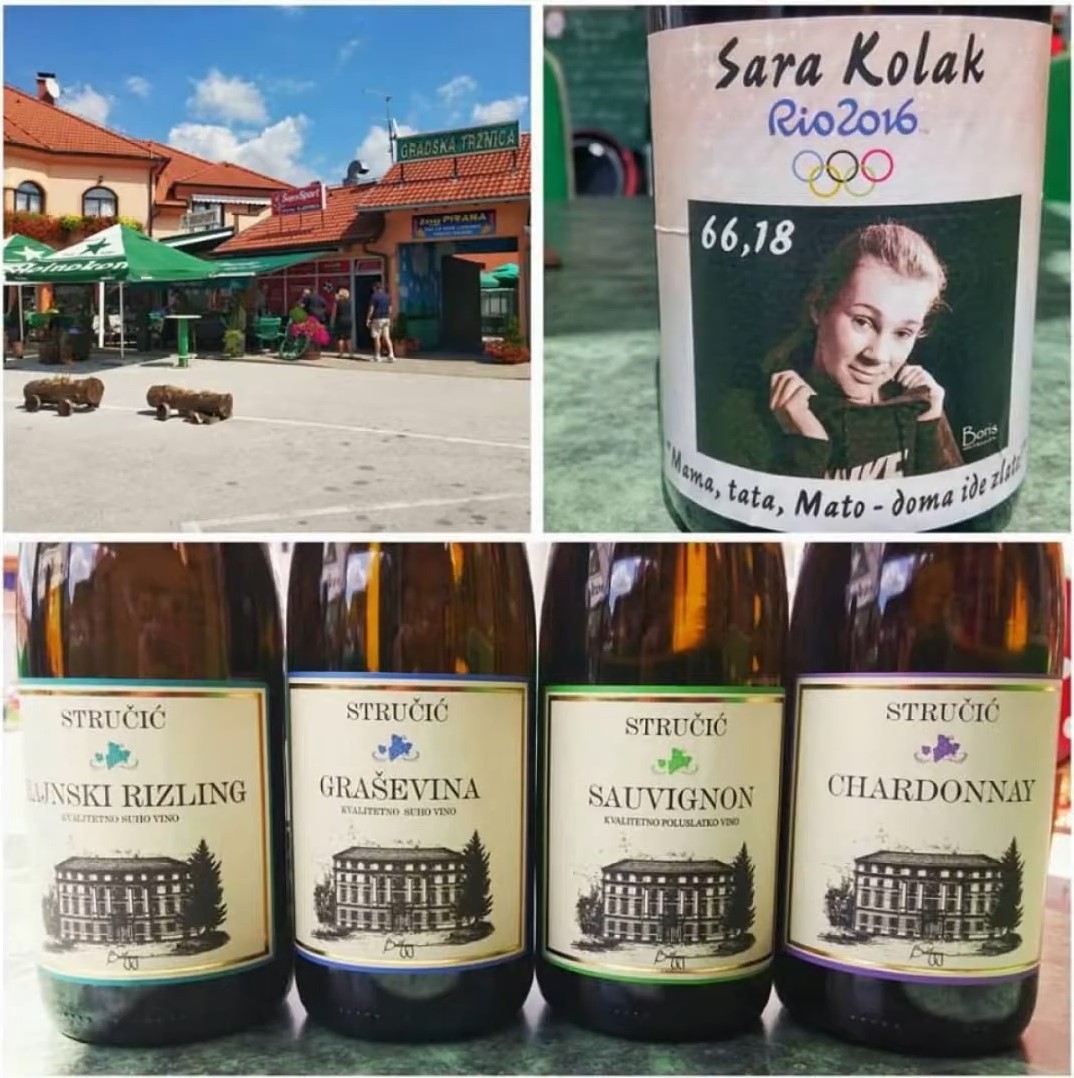
The opening of the Ludbreg Wine Road about ten years ago encouraged a stronger development of their winery. Thus, in 2017, Vinarija Stručić produced the first sparkling wine from the Ludbreg vineyards, which has the label "blanc de blancs" (namely "white from white"), which means that only white grapes were used in its production, that is, Chardonnay.
"After top quality wines, every winemaker wants to produce sparkling wine. It is the crown of your work, as if, for example, you have won the World Cup. The production of sparkling wine was our desire for a step higher. And now, three years ago, we are doing batch after batch," Sanja points out.
The Croatian Wine Institute, which evaluates and issues a quality certificate, rated their sparkling wine as top quality. And there is only five percent of top wines in Croatia, so they expanded their production in 2018 with rose sparkling wine from the Portuguese. It is a unique rarity in Croatia, produced by only one other winemaker on Plješivica.
Microclimatic conditions with a continental climate favor the quality ripening of grapes, so the Podravina and Zagorje regions are God-given for sparkling wine production. The Ludbreg vineyards' climate is ideal for producing light wines with little alcohol, sparkling wine, and wines of late harvests.
Decanter quality certification
Stručić Winery sells its products throughout Croatia. In Ludbreg, visitors can taste their wines in the Bonaparte coffee bar, which they own, as well as the Amalia catering facilities, Pivnica Mejaši, and Hotel Crnković.

"Rhine Riesling is mostly associated with the name of our winery. It is our flagship and our most sought after wine on the market. Then follow Graševina, Chardonnay, Portuguese, Sauvignon… Premium wine lines, sparkling wines, aged, and nature wines are distributed to the Adriatic coast," says Tomislav.
The secret behind the Sučić Winerys's success, Sanja points out, is harmony, great love, patience, a lot of sacrifices, and constant investments. Proof of quality arrived last August when the Stručić Winery won a bronze medal for Chardonnay and recommendations for Rhine Riesling and Graševina at the most influential wine evaluation – the Decanter World Wine Awards 2020 in London.
"It is a confirmation that we make quality wine. With these recognitions, we have increased visibility," says Tomislav with satisfaction.
Ludbreg vineyards on the wine list of Croatia
For wines to achieve top results, a lot of education, work, and knowledge is needed, so the Stručić family cooperates with the leading Croatian sommelier and Decanter judge Siniša Lasan. With Varaždin County's cooperation, Siniša visited several wineries and tasted wines, discussed problems, and gave his view of the current situation in winemaking in the county.

Continental tourism is in the beginning. Tourism Ministry began to give it importance and encourage it only a few years ago.
"The Ludbreg and Varaždin vineyards are neglected. They are not marked on Croatia's wine list, and our winemakers are very hardworking but self-effacing. A dozen of us from all over the county will have to sit down, compare wines, listen to the profession to style them if necessary so that we stand out together with quality. I believe that we will soon mark our vineyards on the wine list, which would raise the price, and we could sell our wines more easily on the doorstep," Sanja is optimistic.
"Viticulture is a demanding activity that requires a lot of attention because wine is alive and should be continuously monitored. Without love for the vineyard and wine, there is no progress, "the Stručić couple agrees.
However, the biggest reward in their work is that the interest in winemaking is shown by their 17-year-old son Luka. He wants to enroll at the Faculty of Agriculture and become a wine expert, oenologist. Thus, when the time comes, to the family's satisfaction, the winery will be taken over by the third generation, which will cultivate, enrich, and further create new top-notch wines.
To read more about Ludbreg, follow our dedicated page.
Varazdin Old Town Nominated For Croatia's Second European Heritage Label
January 11, 2021 – Comparable to UNESCO's World Heritage List, the European Heritage Label is given to sites that have played a significant in the history, culture and values of Europe. If successful, Varazdin Old Town will be only the second site in Croatia to receive the classification
They say that Northern Croatia has more castles, fortresses and stately homes than any other region in the country. And they are probably right. Not that the names and locations of all are widely known either in the country, and certainly not outside. Truth be told, some of the structures included on Northern Croatia's list of important buildings have lain derelict for centuries. In others, the decline has been more recent. The best way to preserve such buildings seems to come from reimagining them for contemporary use, rather than simply preserving them in aspic or amber.
That is something that Varazdin Old Town does extremely well. All of Northern Croatia's famous castles do this well - Čakovec castle, Trakošćan, Veliki Tabor and Gornja Stubica. It's the reason they are famous. By opening up their doors as museums and event spaces, they attract hundreds of thousands of visitors each year and they get to tell their stories. And the story of Varazdin Old Town makes it perfect for the European Heritage Label.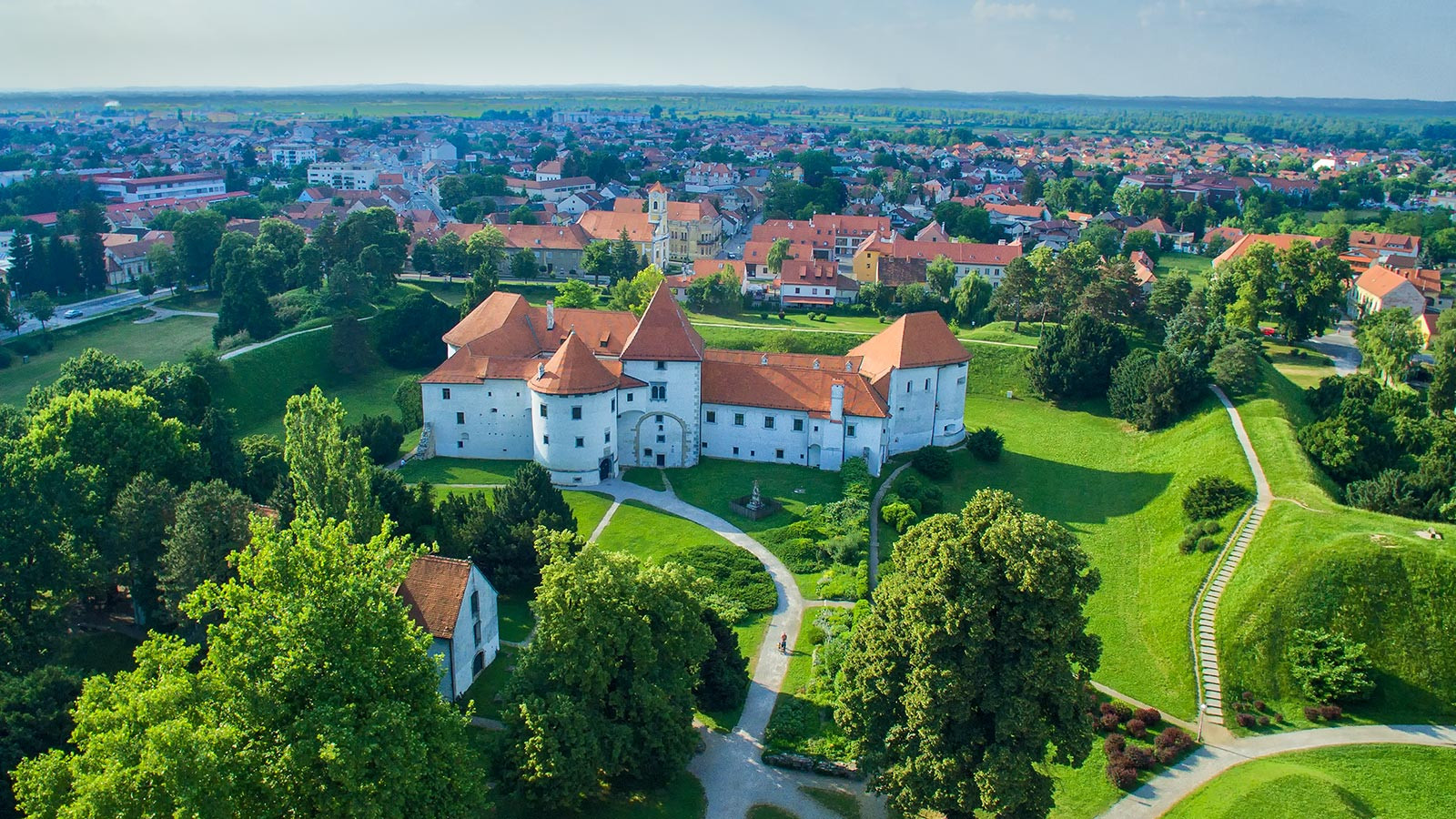 © Ivo Biočina / Croatia National Tourist Board
© Ivo Biočina / Croatia National Tourist Board
Varazdin Old Town is today inhabited by the Varaždin City Museum. They give guided tours around the fortress that was once the full extent of Varazdin Old Town. This city museum is the best way to learn about Varazdin's extraordinary buildings, culture and history. The museum has undertaken this role, and that of preserving items from Varazdin's past, since 1925. It has four permanent exhibitions and six major departments – Archaeology, History, Cultural History, Ethnographical, Entomology and the Gallery of Old and Contemporary Masters, some of which are inside the Old Town fortress itself.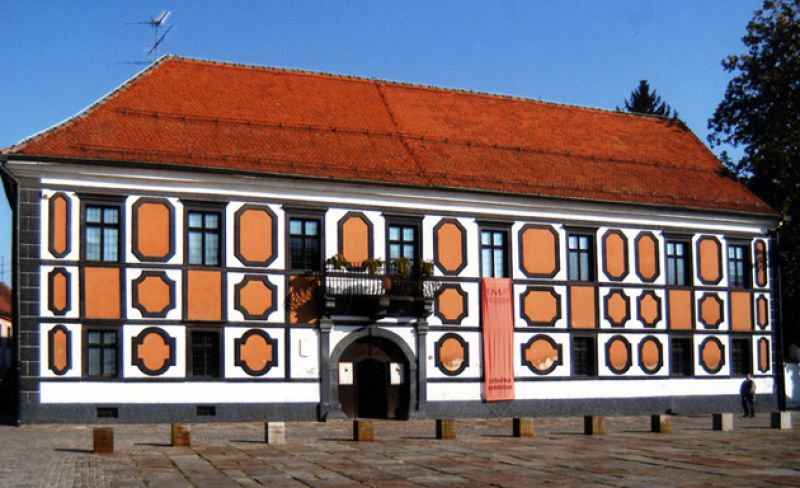 The Gallery of Old and New Masters of Varaždin City Museum © City of Varazdin Tourist Board
The Gallery of Old and New Masters of Varaždin City Museum © City of Varazdin Tourist Board
The Old Town fortress itself is medieval in origin, its construction having begun in the 14th century. Its Gothic towers were added a century later and the collection of buildings was remodelled and added to right up to the 19th century, in response to its inhabitants and its purpose.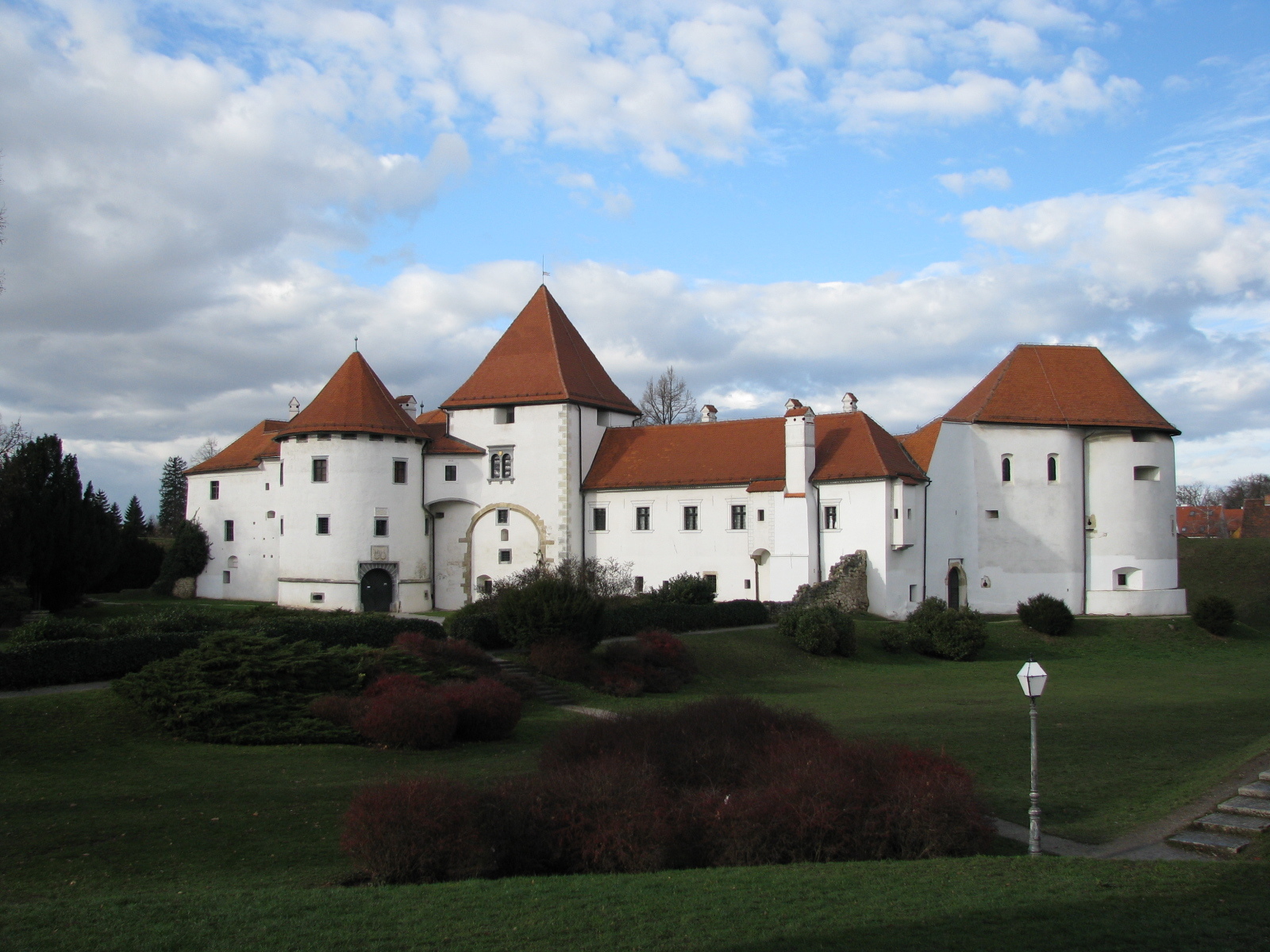 © Ex13
© Ex13
For defence against the Ottomans in the 16th century, it was reconstructed as a Renaissance fortress – high earthen walls with bastions were added, and a double moat. During the past, many noble families have lived here - the Counts of Celje, John Ungnada, George of Brandenburg and Croatian Ban Thomas Erdödyja and his successors. Indeed, Varazdin was once the capital city of Croatia, ruled from these very buildings. In its changing use, architecture and occupancy lies the story of not only the development of Croatia but that too of Europe and it is this that makes Varazdin Old Town eligible for the European Heritage Label.
The European Heritage Label is awarded to sites that bring to life the European narrative and the history behind it. The European Heritage label is currently awarded only every two years. So far, the only site in Croatia to receive the European Cultural Heritage Label from the European Commission is the Neanderthal Museum in Krapina. Its label was awarded in 2015.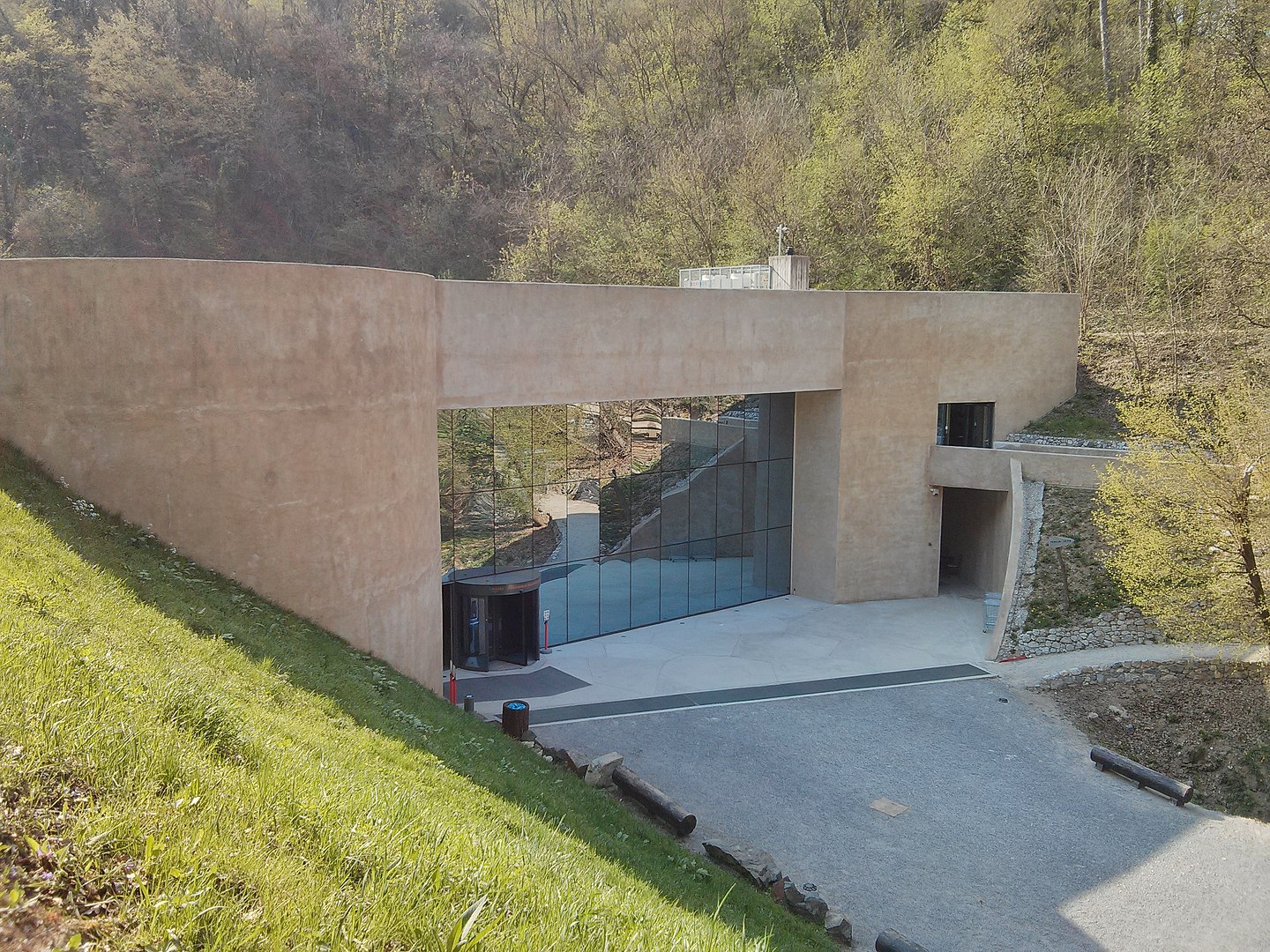 The Neanderthal Museum in Krapina, also in Northern Croatia. It received its European Heritage Label in 2015 © Zeljko Filipin
The Neanderthal Museum in Krapina, also in Northern Croatia. It received its European Heritage Label in 2015 © Zeljko Filipin
Stringent Measures in Varazdin County Lead to Decline in Coronavirus Cases
ZAGREB, Dec 11, 2020 - After three weeks since more stringent epidemiological measures were introduced in Varazdin County, the seven-day incidence rate of new coronavirus infections has decreased by more than 10% and preliminary antigen tests in local companies have revealed a rate of 2.9% of infections.
The head of Varazdin's civil protection authority, Robert Vugrin, told a press conference on Friday that in the past 24 hours Varazdin County had registered 206 new cases of coronavirus and that 589 tests had been conducted. He said that there was a continuing decline in the share of positive cases in the number of tests taken, which in the past 24 hours was 35%.
Over the past week Varazdin County has registered 1,737 new cases of coronavirus and the seven-day incidence rate is 1,042 per 100,000 people.
There are currently 267 patients in a serious condition in Varazdin general hospital, 222 patients are in intensive care and 20 are on ventilators. Five people died as a consequence of COVID -19 in the past 24 hours.
Vugrin said that the results were visible after more stringent epidemiological measures were introduced in the county.
He explained that in the first 11 days after the measures were introduced the numbers continued to grow and nine days later a mild decline was recorded. He added that the 7-day incidence rate on 1 December was 1,169.
"Today that number is 1,042, hence it is obvious that we have recorded a fall of more than 10 per cent in the past nine days," Vugrin underlined.
County Prefect Radimir Cacic said that had the measures not been introduced the county would still have an increasing number of infections.
Stricter Measures in Varazdin County Lead to Stagnation in New Infection Numbers
ZAGREB, Dec 7, 2020 - Stricter anti-epidemic measures for Varazdin Country that were introduced on November 21 have resulted in the number of new infections stagnating in recent days, the head of the COVID-19 management team for that county, Robert Vugrin, said on Monday.
Vugrin recalled at a press conference that three weeks ago they had been registering 1,500 new infections per week, they had had 172 patients with severe cases of COVID in hospitals, and the percentage of positive coronavirus tests had been 37%.
It was obvious then, he said, that the epidemiological measures in place were not effective, and recommendations made to the national team were either not accepted or were made more lenient.
The 7-day incidence rate in Varazdin County was twice and half times higher than the national one, and the county team had to react and propose stricter measures which entered into force on November 21. The same day, all secondary school and higher education institutions in the county accepted the proposal to switch to online classes.
Vugrin added that they had had to wait at least two weeks for the first results.
During the first week, the number of new infections rose to 2,100. The number of hospitals in patients was also increasing, to 272, while the percentage of positive tests was 44%.
However, he said, two weeks after the stricter measures were introduced, the numbers have started to stagnate.
Vugrin said that the number of new infections in a week was under 2,000, and in the last three days there has not been an increase in the number of patients in hospitals, so the number of patients admitted to and released from hospitals is balanced.
"Over the past three days, we have come from 272 to 262, and today we have 258 patients in hospitals," Vugrin said.
Varazdin COVID Crisis Response Team Head Warns of Hotspots in Factories
ZAGREB, December 5, 2020 - The head of the COVID-19 crisis management team in the northern city of Varazdin said on Saturday that the spread of coronavirus could not be stopped in Varazdin County until the hotspots in industrial plants were dealt with.
After the Varazdin City Council's special session on the occasion of the City Day, observed on 6 December in memory of the city's patron saint, St. Nicholas, the COVID-19 crisis management team's head Zlatan Avar said that the hotspots of the infection had occurred in industrial plants and added that in some factories between 30% and 40% people had contracted the virus.
Avar called on the city's authorities to finance rapid antigen tests in the area and in this context he praised the example set by the City of Zagreb.
You can see incidence rates for the municipality of Kneginec, Trnovec Bartolovecki and Varazdin where there are industrial plants, and the situation in those places is worse than elsewhere in the county, Avar said.On Saturday, the local authorities confirmed 319 new infections with coronavirus and nine deaths linked to this disease in the last 24 hours.
In the last seven days, the coronavirus incidence rate in the county was 1,170 per 100,000 inhabitants.
The city's hospital is currently treating 262 COVID-19 patients, of whom 21 are in intensive care wards.
Since the onset of the epidemic, 132 people in the county have died of the complications linked to the COVID-19 disease.
County crisis response team head refutes claims about hotspots in factories
The head of the COVID-19 crisis management team for Varazdin County, Robert Vugrin, said at a news conference on Saturday afternoon that more stringent restriction imposed in the county two weeks ago had led to the stagnation of new cases.
He refuted Avar's claims about hotpsots in the industrial plants and said that local transmissions had led to a surge in the number of new infections.
The director of the Varazdin hospital, Nenad Kudelic said that today the hospital registered 10 fewer COVID patients than yesterday and that this decrease had occurred after a streak of many days with a rise in hospitalisation numbers.
Krapina-Zagorje County Head Says Epidemiological Situation Very Serious
ZAGREB, November 21, 2020 - Krapina-Zagorje County head Zeljko Kolar said on Saturday that the epidemiological situation in the county was very serious, with 104 new coronavirus cases and four fatalities in the last 24 hours.
The county head told a news conference that the county health system was functioning only owing to extreme efforts by medical workers.
"Forty-nine people have died since October 23. If that is not reason enough for people to get serious and start complying with epidemiological measures, I don't know what is. We do not want the scenario that is happening in Varazdin County to happen here," Kolar said in reference to Varazdin County being among the European regions with the highest seven-day incidence of coronavirus, with 944 cases per 100,000 inhabitants.
There are currently 1,043 active cases in Krapina-Zagorje County and 1,453 people are self-isolating, the local COVID-19 response team said.
Holiday Homes with a Story: Branding Rural Accommodation in Varazdin County
November 11, 2020 - "Holiday homes with a story," a project that brands rural accommodation in Varazdin County, continues to expand.
HRTurizam writes that after the Varazdin City Market initiated the delivery of groceries to the homes of Varazdin citizens, now groceries from the market can be directly delivered to all guests thanks to "Holiday homes with a story."
The first step of connecting agricultural producers in the Varazdin region with holiday homes was realized through the so-called "Varaždinske kištrice" (see photo below) which each group of guests receives as a welcome gift and aims to present indigenous products of Varazdin County.
Namely, the Varazdin County Tourist Board has provided this for free for all "Holiday homes with a story" members, and it currently contains Varazdin pumpkin oil, gingerbread, honey, buckwheat flour mlinci, lavender and eco-cosmetics, and tourist brochures with all relevant information.
The availability of fresh food, without leaving your holiday home has been recognized as an opportunity to better connect small farmers with tourism and involve the wider local community in developing and raising the quality of the project.
Fresh food delivery can be ordered from Monday to Saturday. The completed order leaflet, which can be found in every participating holiday home, must be photographed and sent to the e-mail address: This email address is being protected from spambots. You need JavaScript enabled to view it..
The Varazdin market has a Certified Peasant Market status, which guarantees sales directly from producers and the ecological origin of products. The price of delivery depends on the distance of the holiday home, and the price list of groceries can be checked HERE.
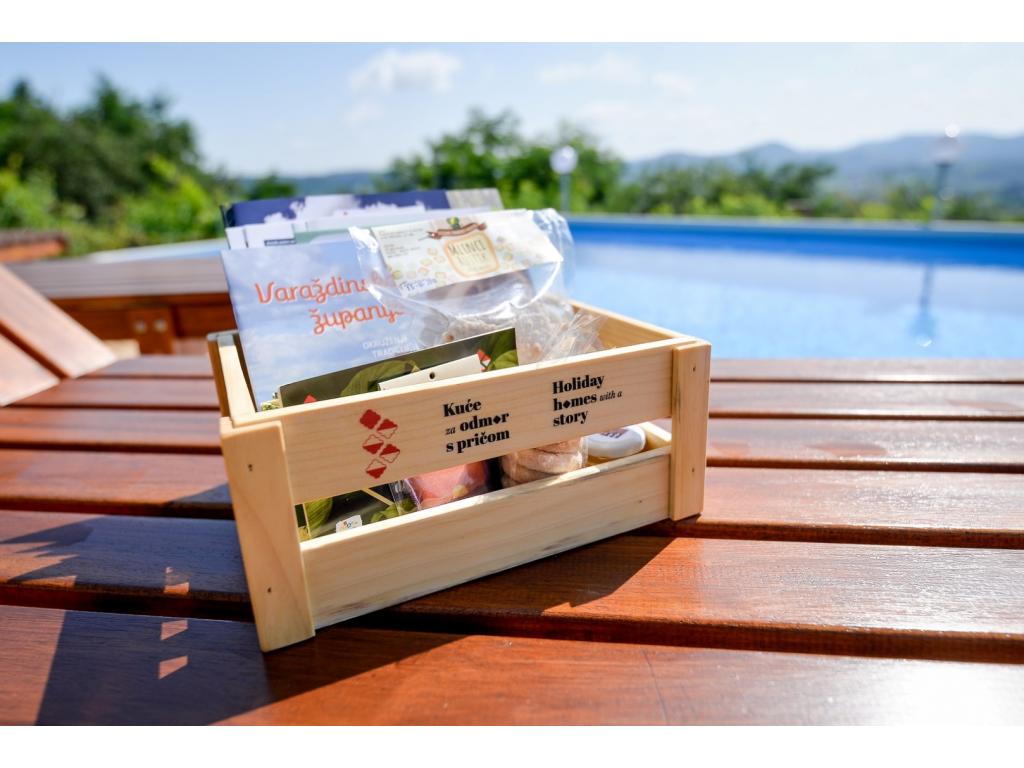
TZ Varazdin County
This is certainly a step further in involving small farmers in tourism and responding to the needs of modern guests who believe that “eating local, healthy, and homemade” on vacation or traveling is increasingly important.
Furthermore, Varazdin pumpkin seed oil is the first in Croatia to protect its name and geographical origin. The fact that Varazdin pumpkin seed oil won two gold medals at the prestigious world competition Monde Selection in Brussels in May this year confirms that it is a top product.
Varazdin County has seven products under one of the forms of protection in the European Union and/or in Croatia. In addition to pumpkin oil, these products include Varazdin cabbage, Zagorje turkey, Zagorje mlinci, Varaždin klipič, Zagorje struklji, and Zagorje acacia honey.
There are currently 45 holiday homes with a total of 220 beds included in this project.
According to data before the coronavirus pandemic, about 90 percent of tourists who visit "Holiday Homes with a Story" are Germans, Danes, and Scandinavians. On average, they stay a minimum of seven nights. You can find out more about the whole project and a list of all the homes with a story on the dedicated website.
For the latest travel info, bookmark our main travel info article, which is updated daily.
Read the Croatian Travel Update in your language - now available in 24 languages.
Join the Total Croatia Travel INFO Viber community.
Nedelisce Parishioners Forgive Priest After He Leaves Church For Love
November 8, 2020 - Nedelisce parishioners are seemingly universal in their understanding and forgiveness as their local pastor leaves the priesthood for an altogether different kind of calling
Not every job is undertaken just to pay the bills. The strong urge to take a specific career is often referred to as a calling. Occupations in which you help other people are usually those described in this way - doctors, teachers, nurses, nuns and priests.
Spoken of with admiration, those who receive 'a calling' are presumed to be on a path of life which is their true destiny. Be it supernatural, genetically implanted or influenced by God, it is considered unlikely that anything could turn their heads and make them veer off course. Such considerations are naïve in their ignorance of Cupid's arrow.
Both Vecernji List and 24 Sata this week reported on the recent resignation of popular parish priest Rev. Tihomir Ciglar (30). Although on his path to the priesthood since he attended Archbishop's Classical Gymnasium in Zagreb, Ciglar has recently departed from his chosen course in favour of an altogether different calling - he fell in love.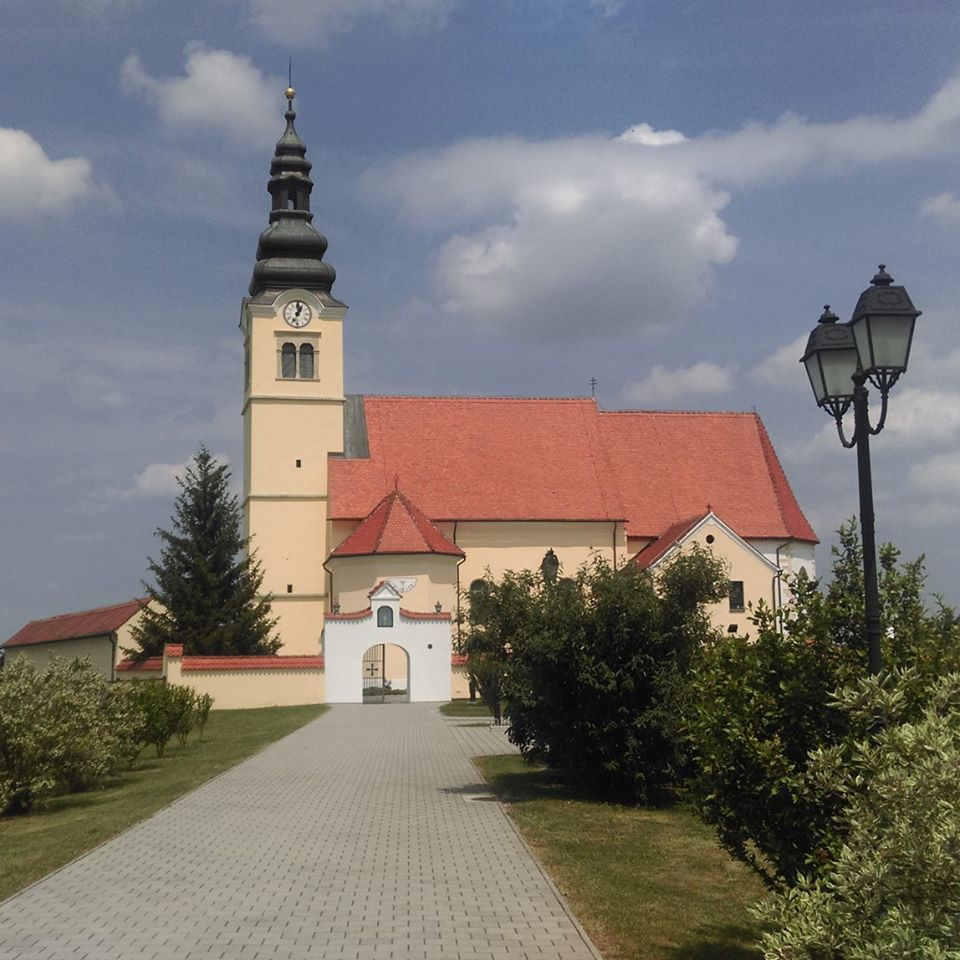 The parish church in Nedelišće © Župa Presvetog Trojstva - Nedelišće
The parish church in Nedelišće © Župa Presvetog Trojstva - Nedelišće
“He was wonderful.,” one of Ciglar's former Nedelisce parishioners is quoted as saying in 24 Sata. Nedelišće is a small town near Varaždin. “He was mild-mannered, good, everyone's favourite. My whole family loved going to Mass and listening to the sermons because of him. And then what happened, happened. He just fell in love, that's how it was.”
“We don't blame him for anything,” the parishioner continued, her voice apparently representative of locals' general feeling on the affair of the popular priest. She also added that news was circulating about the imminent arrival of the couple's first child. “May God give them many more children!”
Tihomir Ciglar was first presented to Nedelisce parishioners in 2014 as a chaplain, and in 2018 he was appointed pastor of the church. His pull from the pulpit occurred after he met the woman who is now his girlfriend in service of the church – she donated her time in the form of a cook. Further speculation on the development of feelings between the woman and her roamin Catholic partner is perhaps best left for village gossip.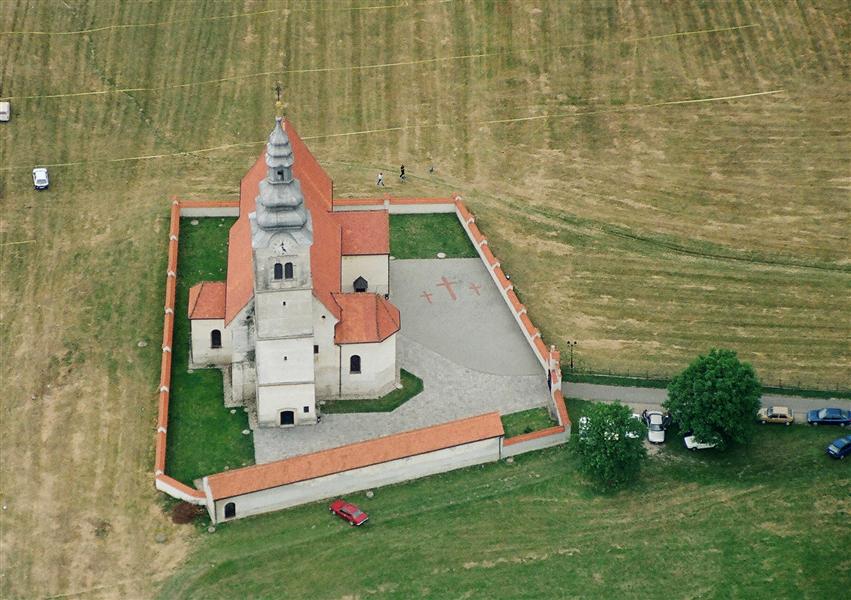 An older image of the church in Nedelišće © TZ Nedelišće
An older image of the church in Nedelišće © TZ Nedelišće
In a heartfelt letter Ciglar penned to his flock, which was read aloud at Mass last Sunday, he asked for their forgiveness. The Nedelisce parishioners seem uniform in their understanding of the situation.
“I wasn't surprised when the letter was read,” one is quoted as saying in 24 Sata. “We'd seen something happen between him and that girl before. That's no small thing with us. Still, we were all kind of rooting for their love story.”
The local diocese is in the process of assigning another young priest to the parish. It is unlikely that the new priest will be similarly tempted from his path, but, you never know. This is not the first time it has happened. A similar case was recorded in Nedelišće forty years ago when a priest left the service out of love for a woman.
For the latest travel info, bookmark our main travel info article, which is updated daily.
Read the Croatian Travel Update in your language - now available in 24 languages


